The
MYSTICS
of the Ages
The
LINEAGE
To the Mystics and Wayshowers is an inspirational tribute to the evolutionary humans across cultures and throughout time, the trailblazers and torchbearers who have illuminated our way, secretly advancing what is possible.
This is a dedication to all those who have come before who participated in the healing, development and awakening of our humanity; to all those who had to practice in hiding, who were imprisoned, who were persecuted or who lost their lives because the masses were not ready to receive their mission and transmission.
This is dedicated to all the scientists who were dismissed as heretics, the inventors who had their work destroyed, the healers who were killed as witches, the yogis who lived in caves, the qi masters who trained in the mountains, and all the women and social change agents who have fought for equality.
To those brave souls across the ages inspired by a deeper purpose who have used their precious lives to prime the pathways of potential for a time in the future when our world would be more ready.
And as we usher in this next epoch may we utilize technology not for more distraction, escape or manipulation, but integrate it with wisdom, ethics, heart and presence to create emergent solutions to our greatest collective challenges.
May that same essential Grace that inspired and lived through them continue to guide our way, Awakening and evolving through us, creating a more loving, empowered, sustainable, thriving world for us all.

MODERN
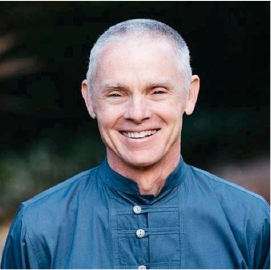
Adyashanti is an American spiritual teacher and author from the San Francisco Bay Area who offers talks, online study courses, and retreats in the United States and abroad. He is the author of numerous books, CDs and DVDs and, together with his wife Mukti, is the founder of Open Gate Sangha, Inc.
Adyashanti
USA | 1962--

The
HALLS
Ancient Mystics
CHRISTIAN MYSTICS
INDIAN MYSTICS
Adi Shankara
Anandamayi Ma
Aurobindo
Krishnamurti
Maharishi Mahesh Yogi
Mahavatar Babaji
Mirabai
Muktananda
Neem Karoli Baba
Nisargadatta Maharaj
Osho
Paramahansa Yogananda
Patanjali
Ramakrishna
Ramana Maharishi
Ramesh Balsakar
Sai Baba
Sai Maa
Sivananda
Sri Ramakrishna Paramahamsa
Swami Vivekananda
Yogi Bhajan
Kabbalah Mystics
RUSSIAN MYSTICS
TAOIST MYSTICS
TIBETAN MYSTICS
ZEN BUDDHIST MYSTICS
Modern Mystics
Amma
Adam Chaksfield
Adyashanti
Alberto Villohdo
Alex Grey
Amit Goswami
Anna-Lisa
Anthony Lemme
Barbara Brennan
Byron Katie
Carolyn Myss
Carole Griggs
David Deida
Dean Radin
Diane Musho Hamilton
Dustin Diperna
Eckhart Tolle
Genpo Roshi
Harry Palmer
Jaqueline O'Keefe
Jeff Foster
Joe Dispenza
Joel Goldsmith
John Hagelin
Jon Kabat-Zinn
Judith Blackstone
Ken Wilber
Kyle Cease
Layla Martin
Loch Kelly
Michael Beckwith
Michael Spatuzzi
Mooji
Paul Chem
Rob MacNamara
Rupert Spira
Raina DeLear
Sharon Sandberg
Sally Kempton
Sonya Biblios
Tara Brach
Teal Swan
Thomas Hubl
Venant Wong
Ancient
MYSTICS
- Adi Shankara
- Anandamayi Ma
- Aurobindo
- Krishnamurti
- Maharishi Mahesh Yogi
- Mahavatar Babaji
- Mirabai
- Muktananda
- Neem Karoli Baba
- Nisargadatta Maharaj
- Osho
- Paramahansa Yogananda
- Patanjali
- Ramakrishna
- Ramana Maharishi
- Ramesh Balsekar
- Sai Baba
- Sai Maa
- Sivananda
- Sri Ramakrishna Paramahamsa
- Swami Vivekananda
- Yogi Bhajan
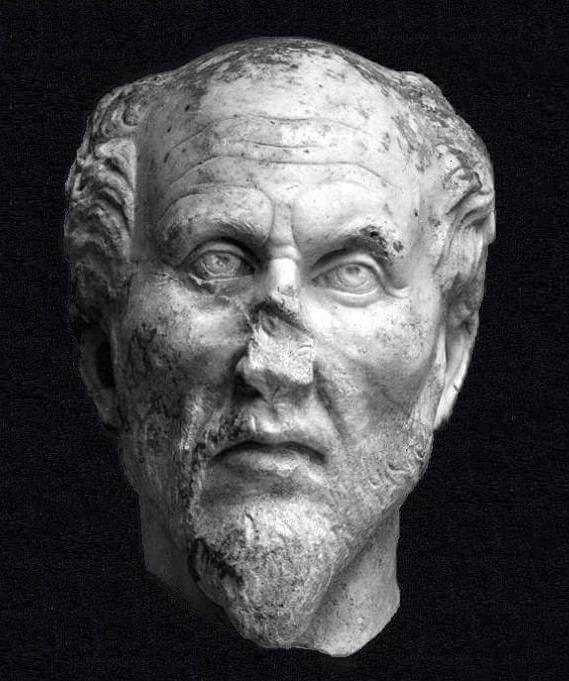
Greek 204/5 – 270 ce
Greek 204/5 – 270 ce
Plotinus was born as Gaius Lucius Plotinus in 205 CE in Lycopolis, Egypt during the reign of the Roman Empire. He was a prominent philosopher and one of the great mystics of the ancient world. He is considered the founder of Neoplatonism, a philosophical and spiritual movement that profoundly influenced subsequent Western thought.
Plotinus studied philosophy in Alexandria, Egypt, where he encountered various philosophical traditions, including those of Plato and Aristotle. However, it was his encounter with the teachings of Ammonius Saccas, a renowned philosopher and exponent of the Alexandrian tradition, that was thought to be most transformative for Plotinus. Under Ammonius’ guidance, Plotinus delved much deeper into metaphysics and mystical experiences, profoundly shaping his philosophical perspective.
Around 244 CE, Plotinus traveled to Rome, where he established a school of philosophy known as the “School of the Wise.” There, he attracted a diverse group of students who were captivated by his profound insights into the nature of reality, the Soul, and the One (or the Good), which he considered the ultimate Source and the essence of all existence.
Plotinus’ philosophy focused on the concept of the “One,” which he described as an ineffable, transcendent principle from which all existence emanates. He believed that the Soul’s ultimate goal is to attain Union with this divine One through contemplation and the purification of the self. Plotinus regarded this Union as the pinnacle of human experience, representing a state of Non-Duality.
The Neoplatonic school he founded continued to flourish for several centuries, leaving an indelible mark on the intellectual and spiritual landscape of the time. And, Plotinus’ influence also extended far beyond his lifetime, impacting both Eastern and Western philosophical and wisdom traditions. His emphasis on the ascent of the Soul towards the Divine and the quest for Non-Dual Unity with the One profoundly influenced later mystics as well as religious movements.
Plotinus remains one of the great mystics, an iconic figure in the history of spiritual philosophy. His legacy endures as a testament to his groundbreaking philosophical and mystical insights. Plotinus’ work continues to be studied and appreciated for its profound exploration of the nature of reality, the human condition, and the quest for transcendence Unity.
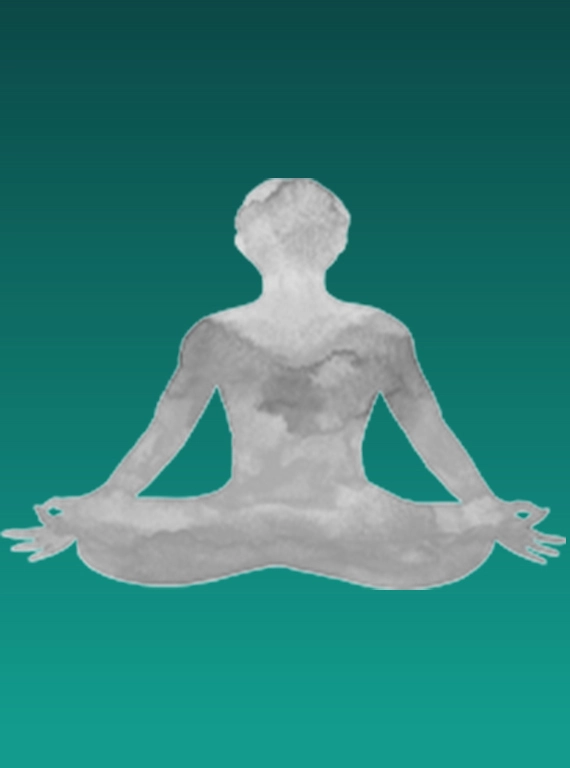
Coming Soon…
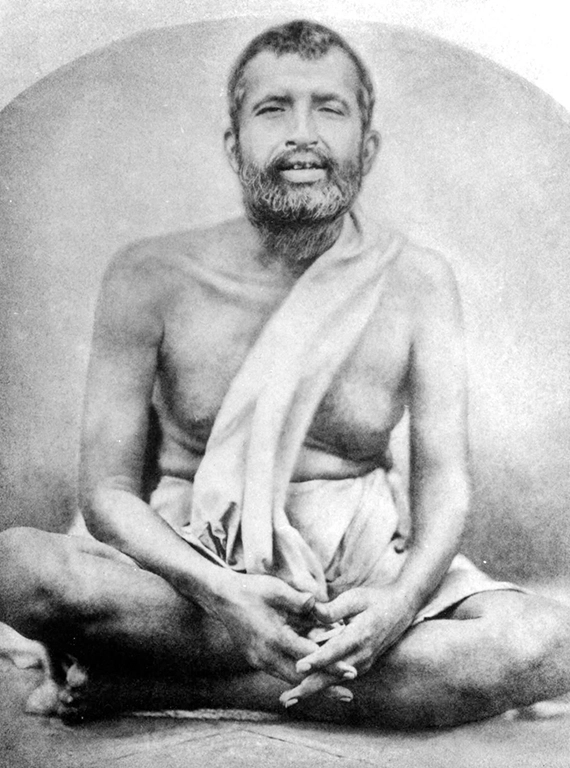
TBD
TBD
Coming Soon…
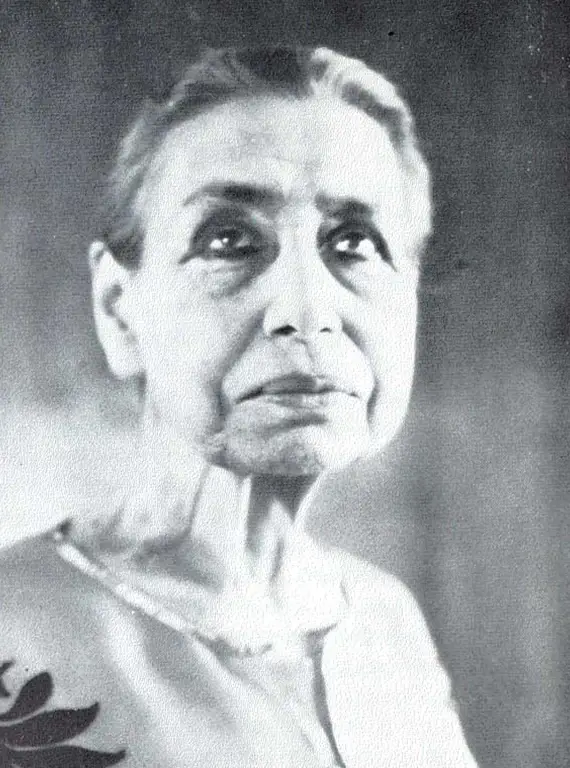
TBD
TBD
Coming Soon…

TBD
TBD
Coming Soon…

TBD
TBD
Coming Soon…

1861-1925
1861-1925
Rudolf Steiner (1861-1925) was an Austrian philosopher, social reformer, architect, esotericist, and the founder of Anthroposophy, a philosophical and spiritual movement that encompasses a wide range of human endeavors, including education, agriculture, art, medicine, and more. He was born on February 27, 1861, in Donji Kraljevec, which is present-day Croatia.
Steiner showed a keen intellect and interest in a multitude of subjects from an early age. He attended the Vienna Institute of Technology and later earned a doctorate in philosophy from the University of Rostock.
Throughout his life, Steiner contributed significantly to various fields. He collaborated with Marie von Sivers, whom he later married, in the development of the artistic and philosophical movement known as Anthroposophy. This movement sought to integrate science, spirituality, and art into a comprehensive understanding of the human experience.
In 1913, Steiner broke away from the Theosophical Society and established the Anthroposophical Society, emphasizing spiritual knowledge accessible through direct experience and individual intuition.
He also founded the Waldorf education system, which focused on nurturing the whole child—intellectually, socially, and spiritually. Waldorf education became a global movement, profoundly influencing modern educational practices.
Steiner made significant contributions to spiritual philosophy and esoteric knowledge, writing extensively on subjects such as reincarnation, karma, and the evolution of consciousness. He also introduced eurythmy, an expressive movement art form, and biodynamic farming, emphasizing the holistic relationship between the earth, plants, and humanity.
Rudolf Steiner was a prolific lecturer and writer, leaving behind a vast body of work covering diverse topics. He traveled extensively, giving lectures and seminars throughout Europe. He passed away on March 30, 1925, in Dornach, Switzerland.
The legacy of Rudolf Steiner lives on through the Anthroposophical Society, the Waldorf education system, biodynamic agriculture, and a worldwide community dedicated to exploring his ideas and teachings.

1863 - 1902
1863 - 1902
Swami Vivekananda (born Narendranath Datta) was a prominent Hindu monk, spiritual leader, and philosopher of the late 19th century. He was born on January 12, 1863, in Calcutta (now Kolkata), India, into a family of considerable influence and affluence.
Growing up, Vivekananda was deeply interested in spirituality and philosophical inquiries. He met the revered saint and mystic Sri Ramakrishna Paramahamsa during his youth, a meeting that significantly influenced his spiritual path. Under Ramakrishna’s guidance, Vivekananda delved into intense spiritual practices and sought to attain enlightenment.
After the passing of Ramakrishna, Vivekananda embarked on a journey to understand the social and spiritual conditions of India. He traveled extensively, witnessing poverty, inequality, and the challenges faced by the masses. Inspired to uplift society, he attended the Parliament of the World’s Religions in Chicago in 1893, where he delivered a historic speech that emphasized religious tolerance, universal acceptance, and the ancient wisdom of India.
This speech catapulted Vivekananda to international fame, and he subsequently traveled across the United States and Europe, spreading the message of Hindu philosophy and spirituality. He founded the Vedanta Society and later, the Ramakrishna Mission, dedicated to social service, education, and spiritual upliftment.
Swami Vivekananda’s teachings encompassed the ideas of Vedanta, emphasizing the universality of religion and the essential oneness of humanity. He advocated for selfless service, the importance of individual strength, and the realization of the divine within oneself.
Swami Vivekananda’s impact on India and the world was immense, inspiring a reawakening of spiritual consciousness and a sense of national pride. He passed away on July 4, 1902, but his legacy endures, and his teachings continue to guide seekers and thinkers, transcending borders and generations.

1836
1836
Sri Ramakrishna Paramahamsa, often simply referred to as Ramakrishna, was a prominent 19th-century Indian mystic, saint, and religious leader. He was born on February 18, 1836, in Kamarpukur, a small village in West Bengal, India.
Ramakrishna exhibited a deep spiritual inclination from an early age and displayed an intense devotion to God. His spiritual journey was diverse, as he explored various religious traditions and practices, including Hinduism, Islam, Christianity, and Buddhism. Through these explorations, he sought to experience the ultimate truth and realize the divine essence in all religions.
During his life, Ramakrishna had several significant spiritual experiences, including intense visions and states of divine consciousness. His most profound realization was the direct experience of God as the Divine Mother, Kali, and later, other deities.
Ramakrishna’s teachings emphasized the idea that all religions lead to the same truth and that individuals should follow the spiritual path that resonates with them the most. He often used parables, metaphors, and simple stories to convey profound spiritual truths to people from all walks of life.
One of his most prominent disciples was Swami Vivekananda, who later founded the Ramakrishna Mission and the Ramakrishna Math, organizations dedicated to spreading Ramakrishna’s teachings and principles of spirituality, service, and harmony among people.
Ramakrishna passed away on August 16, 1886, leaving behind a rich legacy and a profound impact on the spiritual and philosophical landscape of India. His teachings continue to inspire millions of individuals worldwide, guiding them on their spiritual journeys and promoting the universality of religious and spiritual truths.

1887
1887
Swami Sivananda Saraswati, commonly referred to as Swami Sivananda, was a revered Hindu spiritual teacher, yogi, and proponent of Vedanta and Yoga. He was born on September 8, 1887, in Pattamadai, Tamil Nadu, India. Prior to his spiritual pursuits, he obtained a medical degree and practiced as a doctor.
In the early 1920s, Swami Sivananda experienced a profound spiritual awakening and renounced his medical career to dedicate his life to the pursuit of spiritual knowledge and the practice of yoga. He traveled extensively, seeking out renowned spiritual masters, studying various yogic and philosophical traditions.
In 1932, Swami Sivananda founded the Divine Life Society, a spiritual organization that disseminates spiritual knowledge and teachings based on the principles of yoga, Vedanta, and universal spirituality. The organization aimed to serve humanity through the promotion of spiritual values and the practice of selfless service.
Swami Sivananda’s teachings emphasized the importance of a balanced and holistic approach to spiritual growth, integrating the paths of karma yoga (selfless service), bhakti yoga (devotion), jnana yoga (knowledge), and raja yoga (meditation). He authored over 200 books on yoga, Vedanta, spirituality, and health, providing accessible guidance for seekers around the world.
He established the Sivananda Yoga Vedanta Centers, Ashrams, and affiliated organizations globally to impart the teachings of yoga and spiritual philosophy. Swami Sivananda’s teachings continue to inspire millions, and his legacy endures through the continued dissemination of his writings and the activities of the organizations he founded. Swami Sivananda passed away on July 14, 1963, leaving behind a rich spiritual legacy and a vast body of wisdom and teachings.

20th century
20th century
Sai Maa Lakshmi Devi Mishra, known as Sai Maa, is a spiritual teacher and leader who founded the International Sai Maa organization. Sai Maa Lakshmi Devi Mishra was born in the mid-20th century in the state of Karnataka, India. From a young age, she showed a profound interest in spirituality and the study of consciousness. Over the years, she embarked on a spiritual journey, seeking knowledge and understanding from various spiritual traditions and gurus.
Sai Maa’s spiritual quest eventually led her to a deep connection with the teachings and practices of Sai Baba of Shirdi and later, Swami Muktananda. Drawing from these influences and her own spiritual experiences, she began sharing her wisdom and guidance with others. She established the International Sai Maa organization to spread her teachings and offer spiritual education, programs, and workshops worldwide.
Her teachings often emphasize the importance of self-realization, love, compassion, and personal transformation. Sai Maa’s approach integrates both Eastern and Western spiritual philosophies, aiming to guide individuals toward a higher state of consciousness and a deeper connection with the divine.
Throughout her life, Sai Maa has traveled extensively, conducting workshops, giving discourses, and offering individual guidance to spiritual seekers. Her mission continues to inspire and empower individuals to lead a life of purpose, mindfulness, and compassion.

19th - 20th century
19th - 20th century
Sai Baba, also known as Shirdi Sai Baba, was a revered spiritual master and saint who lived in the 19th and early 20th centuries in Shirdi, a village in Maharashtra, India. The details of his birth and early life remain largely unknown, adding to the mystique surrounding his persona.
Traditionally believed to have been born around 1838, Sai Baba arrived in Shirdi and made it his abode, where he gained a devoted following. He was known for his selfless love, compassion, and teachings that transcended religious boundaries. His spiritual discourses emphasized the oneness of God, unity among diverse religious paths, and the importance of love and charity.
Sai Baba’s simple and unassuming lifestyle, coupled with his acts of kindness and miracles, endeared him to people from all walks of life. He often attributed his miracles to the divine power, advocating for faith and devotion as the means to achieve spiritual growth.
Although Sai Baba never wrote down his teachings, his sayings and parables were meticulously documented and later compiled into books, notably the “Sai Satcharitra.” His famous mantra, “Sai Ram,” is chanted by millions of devotees worldwide as a means of seeking blessings and grace.
Sai Baba’s legacy has expanded far beyond Shirdi, as his teachings continue to inspire millions of devotees around the world. His shrine in Shirdi is a major pilgrimage site, drawing devotees from diverse cultures and backgrounds, all seeking solace, blessings, and spiritual guidance. Sai Baba’s teachings remain relevant today, offering a path of love, devotion, and selfless service.

1900 - 1973
1900
Neem Karoli Baba, also affectionately known as Maharaj-ji, was a revered Hindu mystic, saint, and spiritual teacher in the 20th century. He was born on June 11, 1900, in Akbarpur, a small village in the state of Uttar Pradesh, India.
From a young age, Neem Karoli Baba showed signs of deep spirituality and an inclination towards serving others. He became known for his selfless love, compassion, and his ability to impart spiritual wisdom to seekers. He was particularly renowned for his unconditional love and acceptance of all, regardless of caste, creed, or social status.
Neem Karoli Baba’s teachings were rooted in devotion (bhakti) and emphasized the practice of love, service, and faith in God. He encouraged his followers to live a life of simplicity, sincerity, and kindness. His spiritual presence and guidance had a profound impact on those who came into contact with him.
During the 1960s and 1970s, Neem Karoli Baba gained international recognition due to the influence of his teachings on prominent spiritual seekers, including Ram Dass (Richard Alpert), Bhagavan Das, and others from the West. Many were drawn to his teachings and the transformative power of his love and grace.
He established temples and ashrams in India, including the famous Kainchi Dham ashram in Uttarakhand, and encouraged the practice of chanting and prayer as a means to attain spiritual awakening.
Neem Karoli Baba passed away on September 11, 1973, yet his teachings and presence continue to inspire and guide countless spiritual seekers worldwide. His legacy lives on through the numerous devotees and disciples who carry forward his message of love, service, and devotion.

16th century
16th century
Mirabai, also known as Meera Bai or Meera, was a prominent 16th-century Hindu mystic, poetess, and devotee of Lord Krishna. She was born around 1498 in the village of Kurki, Rajasthan, India, into a royal family. From a young age, Mirabai showed an intense devotion and love for Lord Krishna, often expressing her spiritual inclinations through songs and poetry.
Despite her royal upbringing and marital responsibilities to Rana Kumbha of Mewar, Mirabai’s devotion to Krishna remained unwavering. She faced societal opposition due to her public displays of devotion and refusal to conform to traditional roles, choosing a path of spiritual devotion instead.
Mirabai’s compositions, which are primarily in the Rajasthani and Braj Bhasha languages, depict her deep love and longing for Lord Krishna. Her hymns and verses convey her belief in divine love as the path to salvation. Her poetry emphasized the union of the soul with God and advocated for the importance of love and devotion in achieving spiritual enlightenment.
Throughout her life, Mirabai faced challenges and opposition, but her unwavering faith and devotion to Krishna sustained her. Her poems and devotional songs continue to resonate with devotees and spiritual seekers, transcending time and inspiring generations with their expressions of divine love and devotion.
Mirabai’s legacy lives on through her poetry, which has been preserved and celebrated for centuries, influencing the Bhakti movement and leaving an indelible mark on the cultural and spiritual fabric of India.
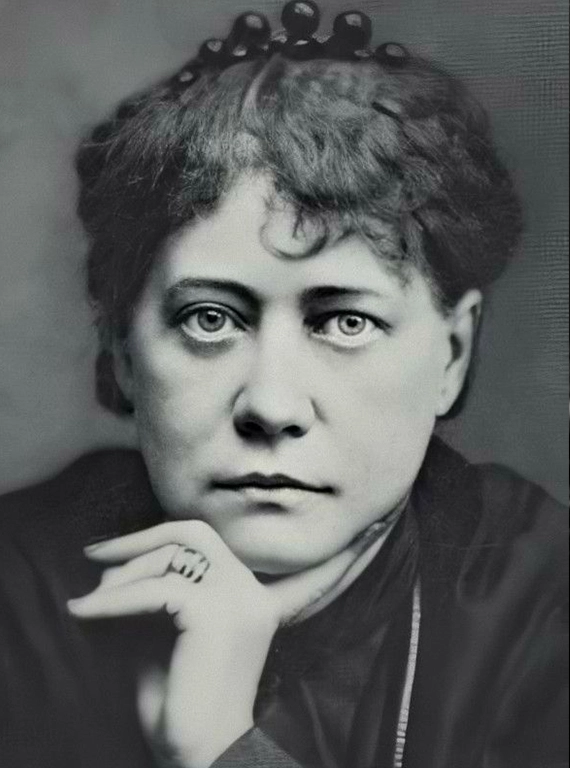
1831-1891
1831-1891
Helena Petrovna Blavatsky (1831-1891) was a prominent figure in the spiritual and occult revival of the 19th century. Born in Yekaterinoslav, Russian Empire (present-day Ukraine), Blavatsky came from a noble family with a strong interest in esoteric and spiritual matters.
She is best known for co-founding the Theosophical Society in 1875, along with Henry Steel Olcott and William Quan Judge. The Theosophical Society aimed to explore and promote the study of ancient wisdom, spirituality, and theosophy—meaning “divine wisdom.”
Blavatsky’s major work, “The Secret Doctrine,” published in 1888, is a foundational text in Theosophical literature. It outlines her cosmology, the origins of the universe, and the spiritual evolution of humanity. She claimed to have received this knowledge from ancient mystical sources and secret brotherhoods.
Throughout her life, Blavatsky traveled extensively, visiting India, Tibet, Egypt, and other parts of the world. She claimed to have had encounters with spiritual masters and received teachings from them, which influenced her philosophy and writings.
However, Blavatsky’s remains an influential figure in the history of occultism and theosophy, with her ideas continuing to inspire spiritual seekers and esoteric traditions to this day.
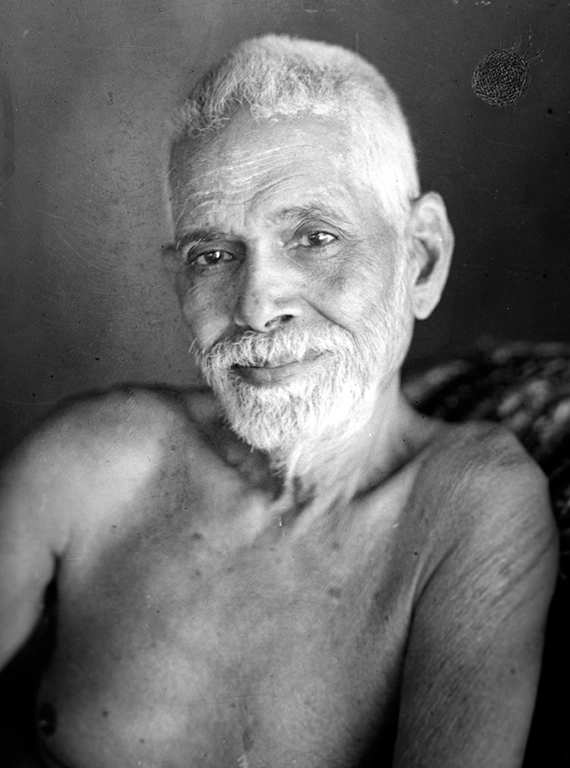
TBD
TBD
Coming Soon…

TBD
TBD
Coming Soon…
TBD
TBD
Coming Soon…
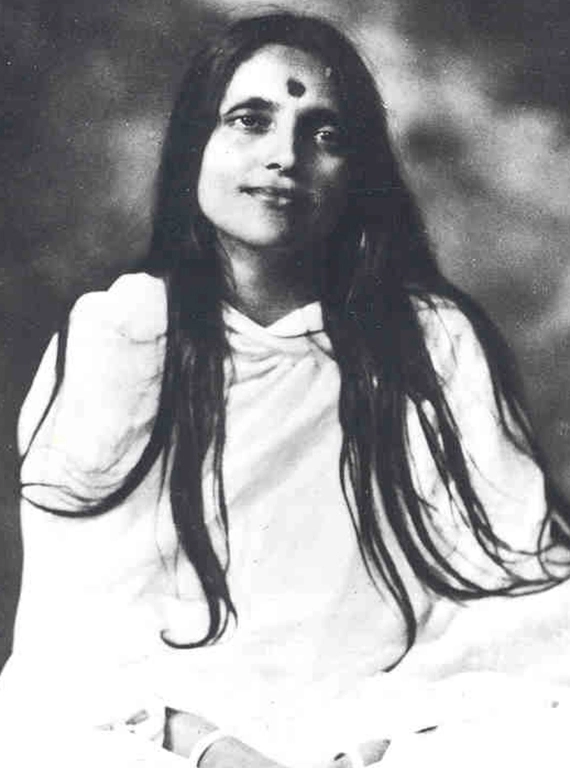
1896 - 1982
1896 - 1982
Anandamayi Ma, born Nirmala Sundari on April 30, 1896, in Kheora, present-day Bangladesh, was a renowned spiritual leader and mystic of the 20th century. From a young age, she displayed a deep inclination towards spirituality and exhibited extraordinary states of consciousness.
At the age of 13, Nirmala experienced a profound spiritual awakening, signaling the beginning of her spiritual journey. In 1918, she was married to Ramani Mohan Chakrabarti, and the couple later settled in Varanasi, India. It was in Varanasi that her spiritual presence and teachings began to attract disciples and followers.
Anandamayi Ma’s spiritual teachings emphasized the importance of self-realization and union with the divine through love, devotion, and service. Her profound wisdom and spiritual insights attracted people from various walks of life, including saints, scholars, and devotees. She was often referred to as the “Bliss Permeated Mother” due to her radiant and loving presence.
Throughout her life, Anandamayi Ma traveled extensively in India and internationally, sharing her teachings and providing guidance to spiritual seekers. Her approach to spirituality was universal, embracing the core truths present in all religions and advocating for a harmonious coexistence based on love and understanding.
Anandamayi Ma’s legacy continues through the ashrams and organizations established in her name, promoting spiritual teachings, humanitarian activities, and the practice of selfless service. Even after her passing on August 27, 1982, her teachings and the spiritual aura she embodied continue to inspire and guide individuals on their spiritual journeys.
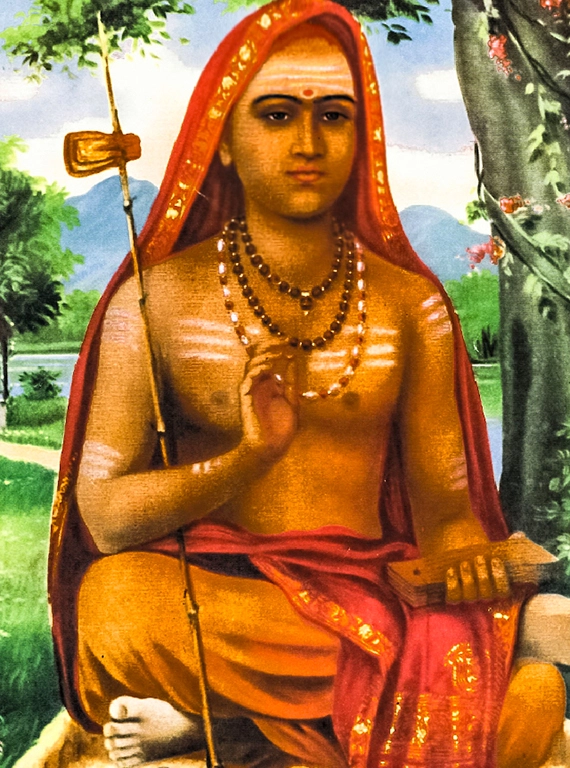
TBD
TBD
Coming Soon…
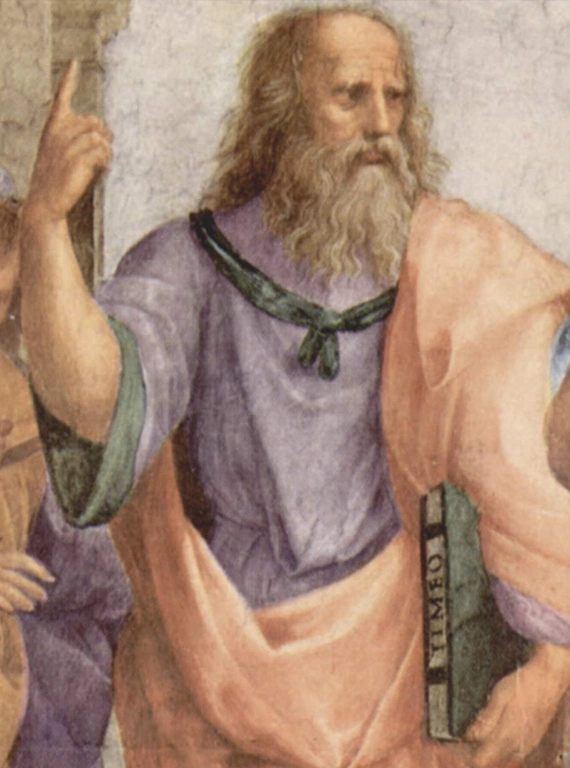
427-347 BCE
427-347 BCE
Plato (c. 427-347 BCE) was an ancient Greek philosopher, mathematician, and founder of the Academy in Athens, the first institution of higher learning in the Western world. Born into an aristocratic family, he initially pursued a political career but was deeply influenced by Socrates, his mentor. Following Socrates’ execution, Plato turned to philosophy.
Plato (c. 427-347 BCE) is often revered as a mystic philosopher, blending philosophy with a mystical approach to understanding reality. Emerging from an aristocratic background, Plato was deeply influenced by the enigmatic teachings of his mentor, Socrates.
Drawn to mystical experiences and transcendent truths, Plato’s dialogues often delved into the realm of the metaphysical and transcendent realities beyond the physical world. He posited that behind the perceivable reality lay a higher realm of eternal and perfect Forms or Ideas, representing the true nature of existence.
Plato’s “Allegory of the Cave” symbolized the journey of the soul from ignorance to enlightenment, akin to a mystic’s journey towards spiritual awakening and ultimate truth. The Symposium explored love and the soul’s ascent to the divine, reflecting mystical themes of unity and transcending the material world.
The founding of the Academy, a center of philosophical inquiry and esoteric teachings, also alluded to Plato’s mystical inclinations. His enduring impact on mysticism is seen in the profound influence his writings had on later mystic philosophers, fostering a rich tradition of philosophical mysticism that continues to inspire seekers of higher truths to this day.
He wrote numerous dialogues exploring a wide range of philosophical ideas, ethics, metaphysics, politics, and epistemology. His most famous works include “The Republic,” outlining his ideal state, and “The Symposium,” discussing love and philosophy.
Plato’s philosophy was characterized by his theory of forms, proposing an eternal, unchanging reality behind the imperfect world we perceive. He emphasized the importance of reason, virtue, and knowledge, seeking to guide society towards a just and harmonious existence.
His legacy has endured through centuries, influencing generations of philosophers and thinkers, and his ideas continue to shape modern philosophy and political theory.

1915-1973
1915-1973
Alan Watts (1915-1973) was a British-born philosopher, writer, speaker, and one of the most influential figures in popularizing Eastern philosophy in the Western world. He was born on January 6, 1915, in Chislehurst, Kent, England.
Watts developed an early interest in Eastern philosophies, particularly Zen Buddhism and Taoism. He attended King’s School in Canterbury and later, at the age of 16, moved to the United States, where he attended Seabury-Western Theological Seminary to pursue his interest in becoming an Episcopal priest.
After completing his studies, Watts left the church and began exploring and teaching Eastern philosophy, focusing on Zen Buddhism, Taoism, and Vedanta. He served as an Episcopal priest for a time, but his passion for Eastern thought led him to part ways with formal religious institutions.
Watts gained widespread recognition through his radio broadcasts and writings, blending Eastern wisdom with modern insights. He authored numerous books, including “The Wisdom of Insecurity,” “The Way of Zen,” “The Book: On the Taboo Against Knowing Who You Are,” and “Tao: The Watercourse Way.”
His unique ability to convey complex philosophical ideas in an accessible and engaging manner made him a popular speaker and writer. Watts emphasized the interconnectedness of life, the present moment, and the need for a holistic understanding of the self and the universe.
Throughout his life, Watts engaged with both academic and lay audiences, encouraging people to awaken to their true nature and live fully in the present. He also founded the American Academy of Asian Studies, which later became the California Institute of Integral Studies.
Alan Watts passed away on November 16, 1973, in his home in Druid Heights, California. His works continue to inspire and influence countless individuals, fostering a deeper understanding of Eastern philosophies in the West.
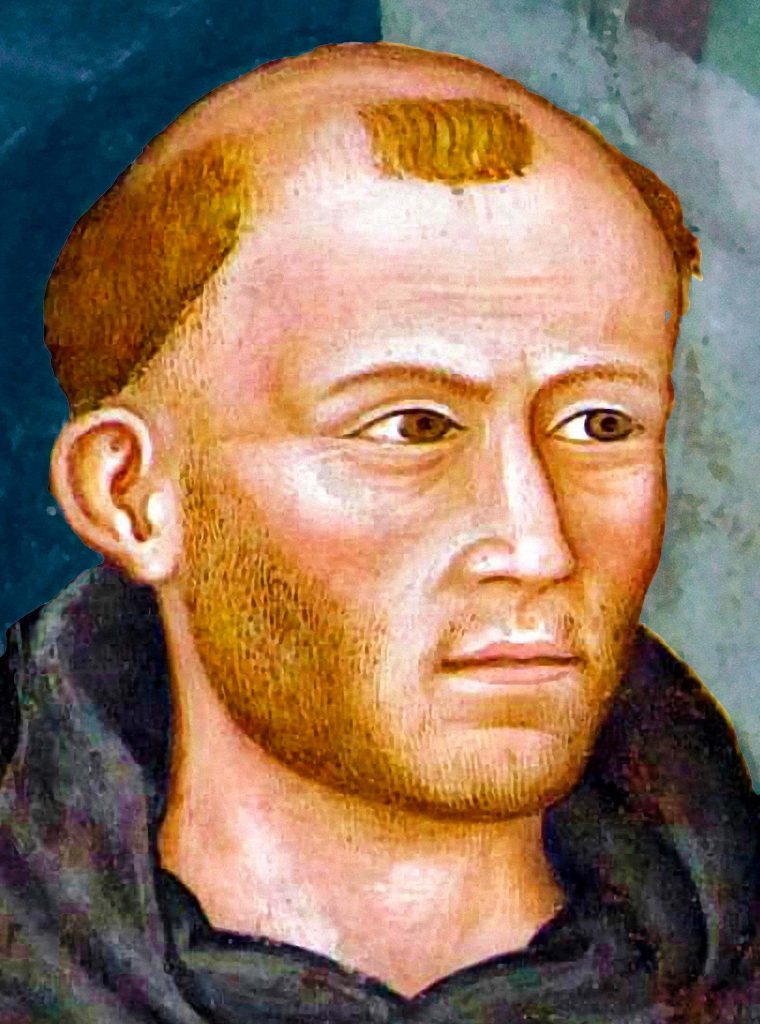
Germany 1260--1328
Germany 1260--1328
Meister Eckhart, also known as Eckhart von Hochheim, was a German theologian, philosopher, and mystic who lived from 1260 to 1328. He is considered one of the most influential Christian mystics and philosophers. As with all mystics who have realized Non-Duality or Unity Consciousness, Eckhart’s teachings centered on the pursuit of divine union and the exploration of the innermost depths of the human soul.
Born in Hochheim, Thuringia, Eckhart entered the Dominican Order at a young age and quickly gained recognition for his intellect and spiritual insight. He studied theology in Cologne and Paris, becoming a renowned preacher and lecturer. Eckhart’s captivating sermons drew crowds of both clergy and laypeople, who were drawn to his profound understanding of the divine and his ability to articulate complex spiritual concepts.
Eckhart’s teachings were rooted in a fusion of Christian theology and the wisdom of mystics, particularly drawing inspiration from Neoplatonism and the works of philosophers such as Plotinus and Thomas Aquinas. He emphasized the surrendering of oneself to the divine will and believed that through this surrender, individuals could attain direct communion with God, the Divine Essence.
Eckhart’s written works, consisting mainly of sermons and treatises, were influential in shaping the development of Western mysticism and philosophy. His writings explored deep philosophical questions, such as the nature of God, the Soul, and the relationship between humanity and divinity. Eckhart’s profound insights into the inner spiritual journey and his emphasis on the transformative power of divine love continue to inspire spiritual seekers and mystic scholars to this day.
Despite his popularity at the time, Eckhart’s unorthodox views on the Soul and the direct experience of God and attracted scrutiny from his contemporary church authorities. In 1326, he faced accusations of heresy, leading to a papal investigation.
Meister Eckhart’s legacy as a profound mystic and philosopher rests on his ability to bridge the gap between intellectual inquiry and direct spiritual experience. His teachings, although challenging at times, provide a pathway for individuals to explore the depths of their own being and to encounter the divine presence within. Through his life and writings, Eckhart remains one of the great mystics and a beacon of wisdom, inviting us to embark on a transformative journey towards union with the Divine.
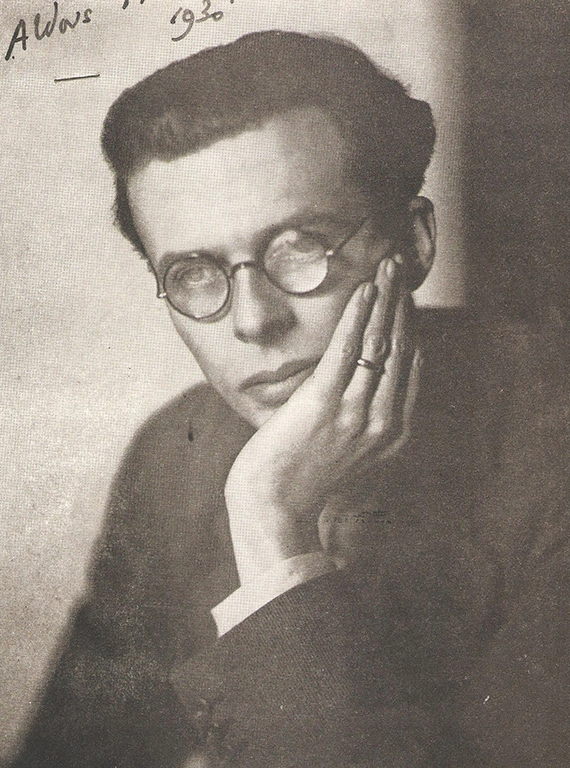
1894-1963
1894-1963
Aldous Huxley (1894-1963) was a prominent English writer, philosopher, and intellectual, known for his literary contributions in various genres and his exploration of visionary and philosophical themes. He was born on July 26, 1894, in Godalming, Surrey, England, into a family of academics and writers.
Huxley was educated at Eton College and later at Balliol College, Oxford. Despite suffering from poor eyesight, which eventually left him nearly blind, he displayed a keen intellect and literary talent from an early age. He published his first collection of poems, “The Burning Wheel,” at the age of 18.
In the 1920s and 1930s, Huxley gained acclaim for his novels, including “Crome Yellow” (1921), “Antic Hay” (1923), and “Brave New World” (1932). “Brave New World” is widely regarded as one of his most significant works, offering a dystopian vision of a technologically driven, socially engineered future.
Huxley’s writing also delved into philosophical and spiritual themes. He explored the mystical and transcendental experiences in his work, particularly influenced by Eastern philosophies and the use of psychedelic substances.
In the 1950s, Huxley became a pioneer in the exploration of consciousness-altering substances such as mescaline and LSD. His experiences with these substances influenced his later works, including “The Doors of Perception” (1954) and “Heaven and Hell” (1956), where he explored the nature of human perception and the mystical aspects of existence.
He relocated to the United States and became a prominent figure in the counterculture movement. Huxley’s lectures and writings on mysticism, spirituality, and the potential of altered states of consciousness gained a dedicated following.
Aldous Huxley passed away on November 22, 1963, in Los Angeles, California. His legacy lives on through his wide-ranging literary works, which continue to be studied, debated, and celebrated for their depth, creativity, and exploration of fundamental human questions.
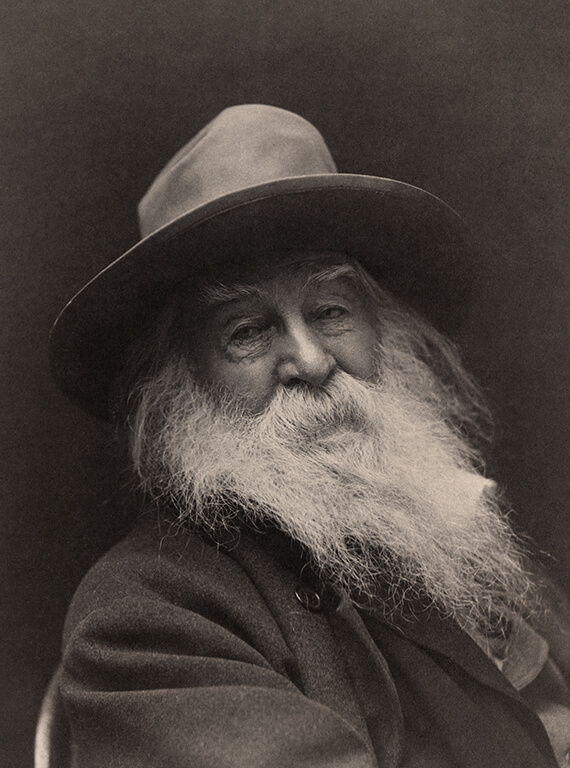
1819-1892
1819-1892
Walt Whitman (1819-1892) was an American poet, essayist, journalist, and humanist, renowned for his influential and innovative contributions to American literature. Born on May 31, 1819, in West Hills, Long Island, New York, Whitman grew up in a family of modest means and received limited formal education.
At a young age, he started working as a printer and journalist. Whitman’s early years involved various editorial roles, including working as a teacher, journalist, and editor for different newspapers. In 1855, he self-published his most significant work, “Leaves of Grass,” a groundbreaking collection of poetry that marked a departure from conventional poetic forms and style.
“Leaves of Grass” celebrated the beauty of the individual, the common man, and the American landscape, promoting themes of democracy, freedom, and the unity of humanity. Whitman’s poetry was characterized by free verse, expansive themes, and a sense of inclusivity and universality.
Throughout his life, Whitman revised and expanded “Leaves of Grass,” eventually producing multiple editions. His poetry evolved with the changing times, reflecting his experiences during the American Civil War and his evolving philosophical and spiritual outlook.
In addition to his literary pursuits, Whitman worked as a nurse during the Civil War, tending to wounded soldiers and gaining firsthand insight into human suffering and resilience. These experiences deeply impacted his later poetry.
Whitman’s later years were marked by recognition and acclaim, and he gained a devoted readership. He continued to write and revise his work until his death on March 26, 1892, in Camden, New Jersey.
Walt Whitman’s legacy is profound, and his poems remain an essential part of American literature. His impact on the development of free verse and his celebration of the individual spirit and the American experience solidify his status as a seminal figure in American literary history.
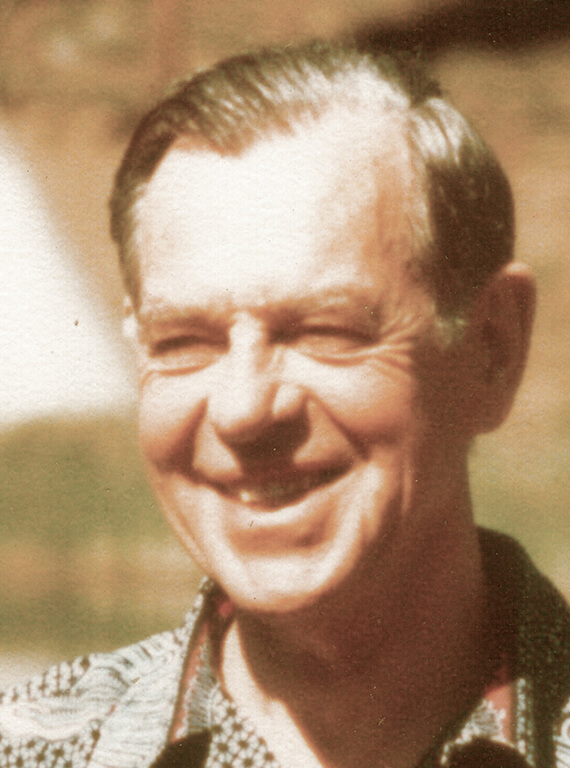
1904-1987
1904-1987
Joseph Campbell (1904-1987) was an American mythologist, writer, and lecturer known for his groundbreaking work in comparative mythology and the study of world religions. He was born on March 26, 1904, in White Plains, New York, USA.
Campbell attended Columbia University, where he studied literature and developed a keen interest in mythology. He explored various mythic traditions, cultures, and religions, aiming to uncover universal themes and motifs that transcend specific societies and times.
His extensive research culminated in his seminal work, “The Hero with a Thousand Faces” (1949), in which he introduced the concept of the “monomyth” or the hero’s journey. This idea postulated a common narrative structure present in diverse mythologies and storytelling traditions across the globe.
In his later years, Campbell gained widespread recognition through his collaboration with filmmaker George Lucas on the “Star Wars” series, where Campbell’s ideas on mythology and the hero’s journey heavily influenced the story and characters.
Campbell’s renowned PBS series, “The Power of Myth,” featuring his interviews with journalist Bill Moyers, further popularized his theories and made them accessible to a broader audience. He also published other notable works, including “The Masks of God” series, delving into the cultural and spiritual history of humanity.
His approach to mythology and the human experience emphasized the importance of storytelling, symbolism, and the power of myth in shaping individual and collective consciousness. He advocated for an understanding of mythology as a living, evolving force that can guide individuals in navigating their lives and finding meaning.
Joseph Campbell passed away on October 30, 1987, in Honolulu, Hawaii, leaving behind a profound legacy and influence on the study of mythology, storytelling, and the interconnectedness of human narratives across time and cultures.
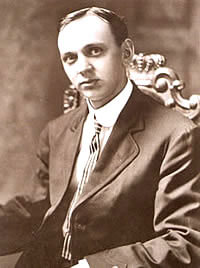
1877-1945
1877-1945
Edgar Cayce (1877-1945) was an American mystic, healer, and clairvoyant who became widely known for his psychic abilities and profound insights into health, spirituality, and human consciousness. He was born on March 18, 1877, in Hopkinsville, Kentucky, USA.
Cayce grew up in a devout Christian family and experienced mystical visions and communications with higher realms from a young age. In his early adulthood, he developed a unique healing ability and began giving psychic readings while in a trance-like state. During these sessions, he would offer diagnoses and prescribe treatments for various physical and spiritual ailments, often using unconventional remedies.
He conducted thousands of readings throughout his life, covering diverse topics such as health, past lives, dreams, spiritual growth, and world events. His approach to healing encompassed a holistic understanding of the mind, body, and spirit.
Cayce’s readings and insights gained a large following, and in 1931, he founded the Association for Research and Enlightenment (A.R.E.) to document and disseminate his readings and teachings. The A.R.E. continues to be a center for the study of Cayce’s work and related subjects.
One of Cayce’s most notable contributions was his ability to access and read the “Akashic Records,” a purported universal storehouse of information about every individual’s thoughts, actions, and experiences. He believed these records could be accessed through the unconscious mind in a trance state.
Aside from his healing and psychic work, Cayce’s readings also delved into philosophical and spiritual matters. He advocated for concepts such as reincarnation, karma, and the interconnectedness of all life.
Edgar Cayce passed away on January 3, 1945, leaving behind a vast body of readings and teachings that have continued to influence seekers, healers, and researchers interested in the integration of spirituality and holistic well-being. His legacy lives on through the enduring impact of his readings and the A.R.E., which continues to promote his philosophy and teachings.
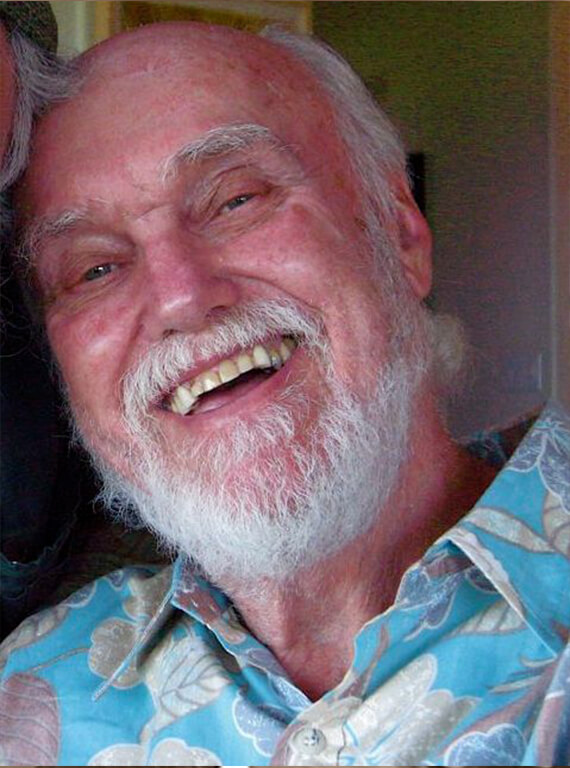
1931 - 1997
Ram Dass, born Richard Alpert on April 6, 1931, was a prominent American spiritual teacher, psychologist, and author known for his deep spiritual exploration and transformative teachings. He was a key figure in the counterculture movement of the 1960s and 1970s.
Alpert began his career as a clinical psychologist and professor, gaining recognition for his research at Harvard University alongside Timothy Leary on the effects of psychedelic substances. However, his life took a profound turn when he traveled to India in the 1960s and met Neem Karoli Baba, also known as Maharaj-ji. This meeting initiated a spiritual awakening, leading Alpert to embrace Eastern spirituality and adopt the name Ram Dass, meaning “servant of God.”
Upon his return to the United States, Ram Dass became a spiritual luminary, promoting a path of love, compassion, and self-awareness. He authored numerous books, including the seminal “Be Here Now,” which encapsulated his teachings and spiritual journey. He emphasized mindfulness, meditation, and the importance of living in the present moment.
Ram Dass advocated for social and environmental consciousness, highlighting the interconnectedness of all beings and encouraging activism grounded in love and compassion. He co-founded the Seva Foundation, a non-profit organization focused on alleviating suffering and promoting health in underserved communities.
In 1997, Ram Dass suffered a stroke that significantly impacted his health, but he continued to share his wisdom and teachings through books, lectures, and retreats. He passed away on December 22, 2019, leaving a lasting legacy of spiritual wisdom, love, and service that continues to inspire seekers on their spiritual paths.
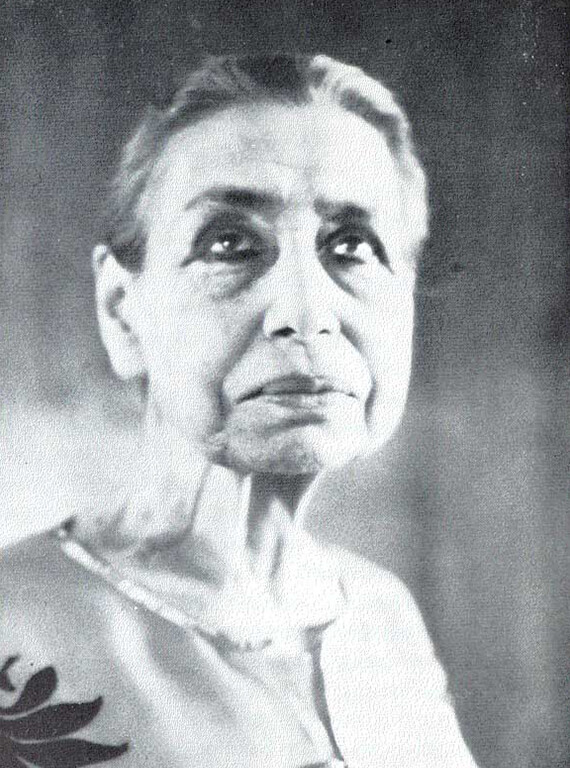
Coming soon…
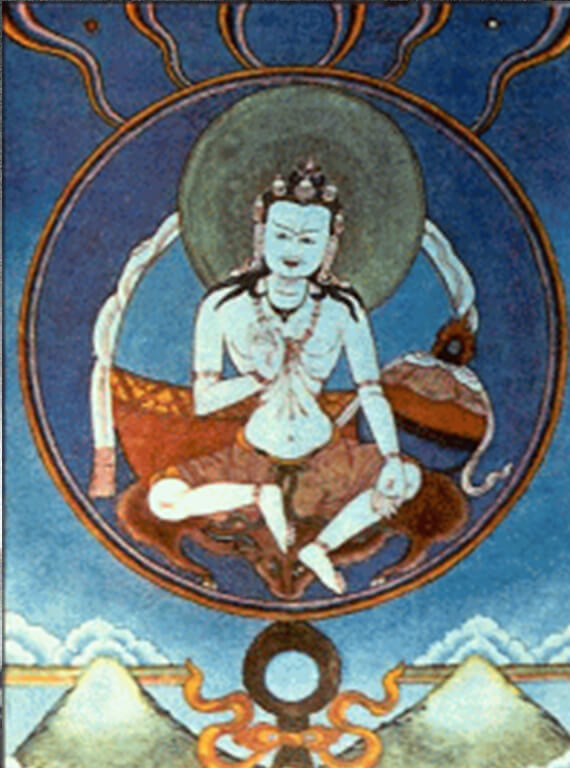
Garab Dorje, also known as Prahevajra, was a legendary figure in Tibetan Buddhism and is considered the first human teacher of the Dzogchen tradition, a profound and direct path to enlightenment. Historical details about Garab Dorje’s life are shrouded in myth and mystery, making it challenging to provide a definitive biography.
According to Tibetan tradition, Garab Dorje was born in the land of Uddiyana (modern-day Swat Valley in Pakistan) around the 1st century CE. He is believed to have displayed extraordinary wisdom and abilities from a young age. Garab Dorje is recognized as an enlightened being, a fully awakened Buddha, who appeared in human form to transmit the teachings of Dzogchen.
Garab Dorje’s teachings emphasized direct recognition of one’s true nature, known as rigpa, which is considered beyond conceptual elaboration and dualistic thinking. He expounded the Three Statements of Garab Dorje, encapsulating the view, meditation, and conduct of Dzogchen.
His disciple, Manjushrimitra, played a crucial role in preserving and transmitting the teachings of Dzogchen. The lineage passed down through successive masters, including Shri Singha and Padmasambhava, eventually becoming a vital part of Tibetan Buddhist tradition.
Though concrete historical facts about Garab Dorje’s life may remain elusive, his profound teachings continue to be a cornerstone of the Dzogchen tradition, influencing practitioners seeking direct realization and liberation in Tibetan Buddhism.
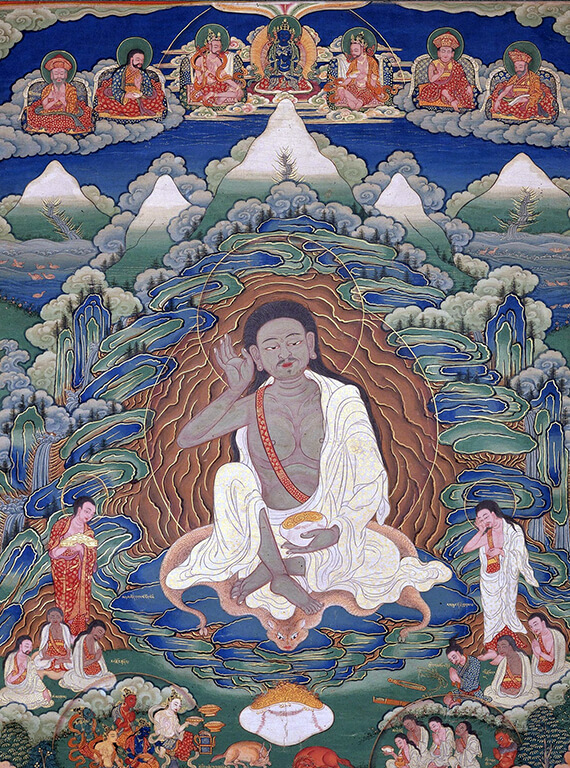
1052 CE
1052 CE
Mila Ropa, commonly known as Milarepa, was a revered Tibetan Buddhist yogi, poet, and saint, celebrated for his spiritual realization and profound teachings. He is a central figure in the Kagyu school of Tibetan Buddhism and a legendary figure in Tibetan culture. His life story is a testament to the transformative power of spiritual practice.
Milarepa was born in 1052 CE in the Kham region of Tibet. His early life was marred by tragedy when his father died, and his family faced severe mistreatment and betrayal at the hands of relatives. Consumed by anger and a desire for revenge, Milarepa turned to dark magic, causing destruction. Realizing the grave consequences of his actions, he sought redemption and turned to Buddhism.
Under the guidance of his teacher Marpa Lotsawa, Milarepa underwent intense spiritual training and rigorous ascetic practices, enduring harsh conditions and hardships. He eventually attained enlightenment through his unwavering determination and dedication to the Buddhist path. He composed many songs and poems reflecting his spiritual journey and realization.
Milarepa’s teachings emphasize the importance of renunciation, compassion, and meditation in achieving spiritual awakening. His profound insights into the nature of suffering, impermanence, and emptiness have inspired generations of practitioners seeking enlightenment.
His disciples, such as Gampopa and Rechungpa, carried forth his teachings and established the Kagyu lineage, one of the major schools of Tibetan Buddhism. Milarepa’s legacy endures through his teachings, poetry, and the vibrant tradition of spiritual practice in his name, influencing countless seekers on the path to liberation.
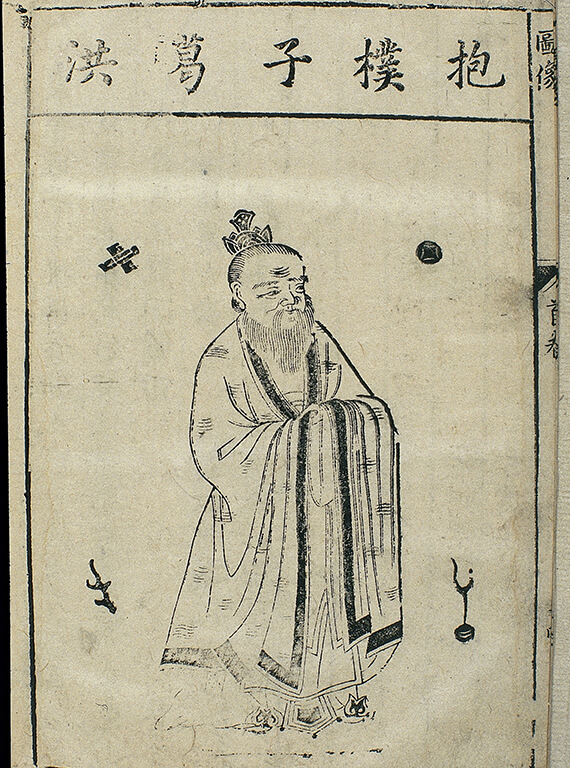
284-364 CE
284-364 CE
Ge Hong (284-364 CE), also known as Ko Hung, was a prominent Chinese scholar, philosopher, alchemist, and writer during the Eastern Jin (317-420 CE) and Western Jin (266-316 CE) dynasties. He was born on the banks of the Yangtze River in present-day Nanchang, Jiangxi Province, China.
Ge Hong came from a family of scholars and officials, and he received a classical education in Confucianism and Taoism. He held various governmental positions throughout his life, serving in the imperial bureaucracy. However, he eventually withdrew from official life to pursue his interests in Taoism and alchemy.
As a Taoist, Ge Hong wrote extensively on various topics, including philosophy, alchemy, medicine, and mysticism. One of his most famous works is the “Baopuzi” (抱朴子), which translates to “Master Who Embraces Simplicity” or “Book of the Master Who Embraces Simplicity.” This text is divided into two parts: “Inner Chapters” (Neipian) and “Outer Chapters” (Waipian). It covers a wide range of subjects, from alchemical practices and spiritual cultivation to government and society.
Ge Hong was a pioneering figure in Chinese alchemy, attempting to transmute base metals into gold and discover an elixir for immortality. He believed in the importance of living a simple, balanced life in harmony with nature and the Tao.
Throughout his life, Ge Hong emphasized the integration of various philosophies, including Confucianism, Taoism, and Buddhism, seeking to find common ground and practical wisdom. He also advocated for benevolent government and the welfare of the people.
He passed away in 364 CE, leaving a lasting legacy as a scholar, alchemist, and philosopher. His works continue to influence Taoist philosophy and alchemical practices, and he remains an important figure in Chinese intellectual history.
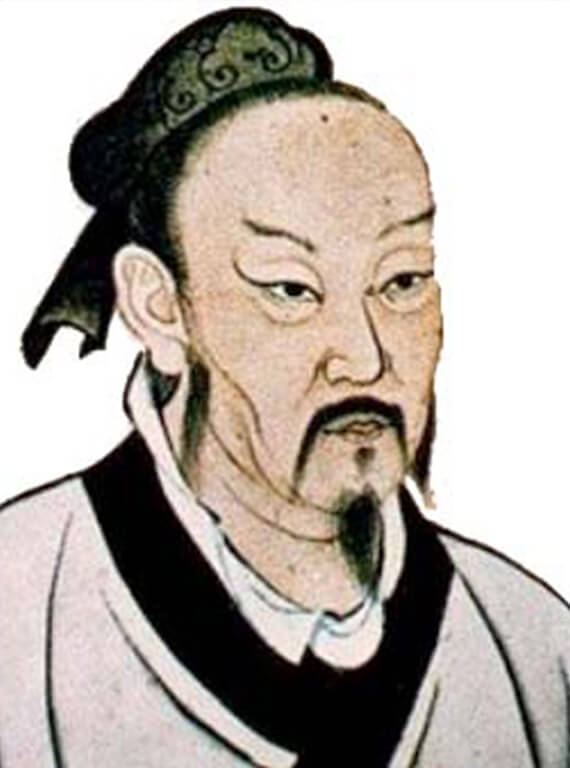
369-286 BCE
369-286 BCE
Chuang Tzu (c. 369-286 BCE), also spelled Zhuangzi or Chuang Chou, was an ancient Chinese philosopher, thinker, and writer, belonging to the Taoist tradition. He is widely regarded as one of the foundational figures in Taoist philosophy and is known for his work titled “Zhuangzi” or “Chuang Tzu,” which bears his name.
Historical details about Chuang Tzu’s life are scarce, and much of what is known comes from traditional accounts and the writings attributed to him. He is believed to have been born around 369 BCE in the state of Meng, which is present-day Meng County, in Anhui Province, China.
Chuang Tzu’s philosophy emphasizes living in harmony with the natural order and embracing spontaneity. He employed parables, anecdotes, and allegorical tales to convey his philosophical ideas. Central to his teachings was the concept of “Ziran,” which translates to “self-so” or “natural spontaneity,” emphasizing the natural and uncontrived way of being.
The collection of writings attributed to Chuang Tzu, also known as the “Zhuangzi,” is divided into two parts: the Inner Chapters (Zhuangzi) and the Outer Chapters (Wai Wenzhong). The Inner Chapters are generally considered to be the work of Chuang Tzu himself, while the Outer Chapters are believed to be contributions from his followers and later Taoist thinkers.
Chuang Tzu’s writings delve into the relativity of human perspectives, the impermanence of life, and the illusory nature of distinctions between opposites such as good and bad, life and death, and self and other.
Chuang Tzu’s influence on Taoist thought and Chinese philosophy at large cannot be overstated. His teachings continue to be studied, interpreted, and admired for their profundity, creativity, and enduring relevance to understanding the human condition and our place in the natural world.
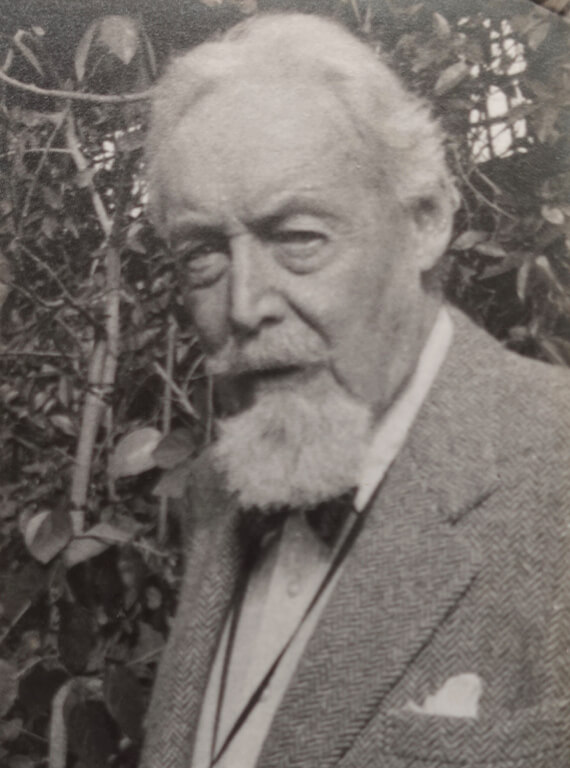
1895-1986
1895-1986
Wei Wu Wei (1895-1986) was the pen name of Terence James Stannus Gray, a 20th-century British philosopher, writer, and exponent of Taoism and Zen Buddhism. Born on September 14, 1895, in Felixstowe, Suffolk, England, he hailed from an aristocratic background and had a classical education at Oxford.
A multifaceted individual, Wei Wu Wei served in the military during World War I and later pursued business ventures. However, his true passion lay in exploring Eastern philosophies and spiritual practices. After retiring from his business endeavors, he embarked on extensive travels, delving deeply into Taoism, Zen Buddhism, and Advaita Vedanta.
Wei Wu Wei’s writings focused on philosophical and spiritual themes, often exploring the paradoxes and mysteries of existence. He used the pseudonym “Wei Wu Wei,” which translates to “actionless action” in Taoist philosophy, signifying a state of effortless doing and spontaneous action.
His works include “Open Secret,” “Fingers Pointing Towards the Moon,” “Ask the Awakened,” and “All Else Is Bondage: Non-Volitional Living.” These writings embody his insights into Eastern philosophies and the ineffable nature of reality, often expressed with wit, simplicity, and depth.
Wei Wu Wei’s philosophy emphasizes the ineffability of the ultimate truth and the limitations of conceptual understanding. He encouraged a direct, non-conceptual approach to spiritual realization, transcending ordinary dualities and embracing a state of “not-doing” or non-interference.
He passed away on January 5, 1986, in Monaco, leaving behind a legacy of profound philosophical works that continue to inspire seekers and spiritual aspirants, guiding them toward a deeper understanding of reality and the nature of existence.
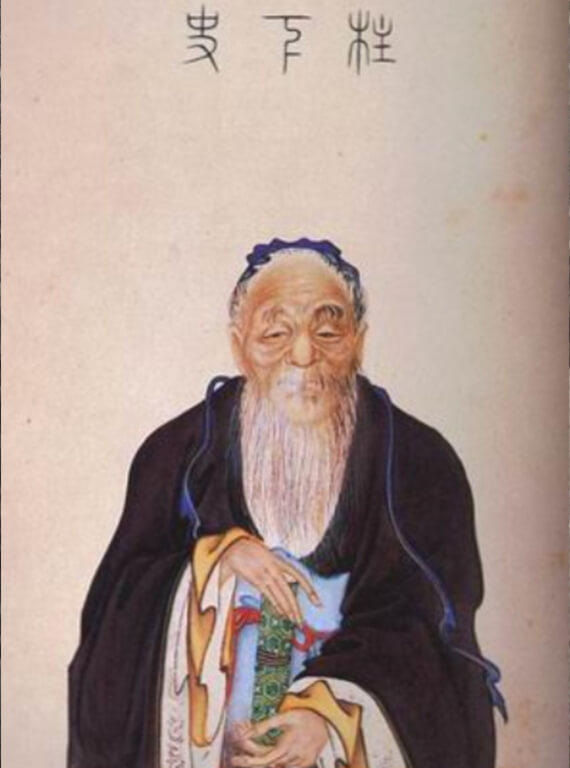
Laozi, also spelled Lao Tzu, is a legendary figure and a foundational figure in Chinese philosophy and Taoism. The exact historical details of his life are shrouded in mystery, and much of what is known comes from ancient texts, folklore, and legends. Traditionally, he is believed to have lived during the 6th century BCE in ancient China.
Laozi is credited with the authorship of the seminal Taoist text, the “Tao Te Ching” (or “Dao De Jing”), a fundamental work of Taoist philosophy that offers insights into the nature of existence, the principles of the Tao, and the art of living in harmony with the Tao.
According to legend, Laozi was a wise sage and keeper of the imperial archives during the Zhou Dynasty. Dissatisfied with the moral decay and political corruption of the society, he decided to withdraw from public life and retire to the mountains. While leaving, he was asked by a border guard to record his teachings, which became the “Tao Te Ching.”
The “Tao Te Ching” emphasizes the concept of Tao, which can be translated as “The Way” or “The Path.” Tao is the fundamental principle that is the source and essence of everything in the universe. Laozi encourages a simple, humble, and natural way of life in harmony with the Tao, advocating for wu wei (non-action) and spontaneity.
Laozi’s teachings deeply influenced Chinese philosophy, Taoism, and later Confucianism, and Buddhism. He became a revered figure in Chinese culture, often depicted as an elderly man with a long white beard, holding a wooden staff.
Laozi’s impact on Chinese thought and culture is immeasurable, and his legacy continues to inspire seekers of wisdom and spiritual truth worldwide. The “Tao Te Ching” remains a classic and essential text for those seeking to understand the principles of Taoist philosophy and the art of living a harmonious and balanced life.
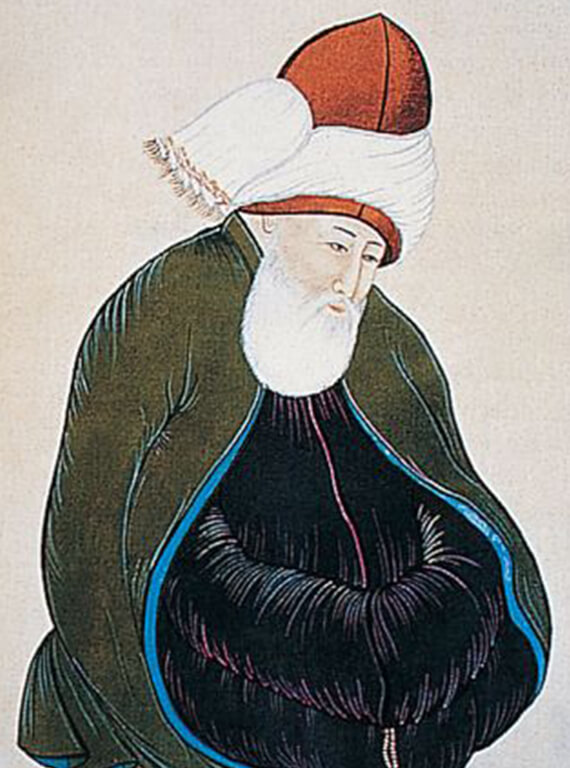
Coming soon…
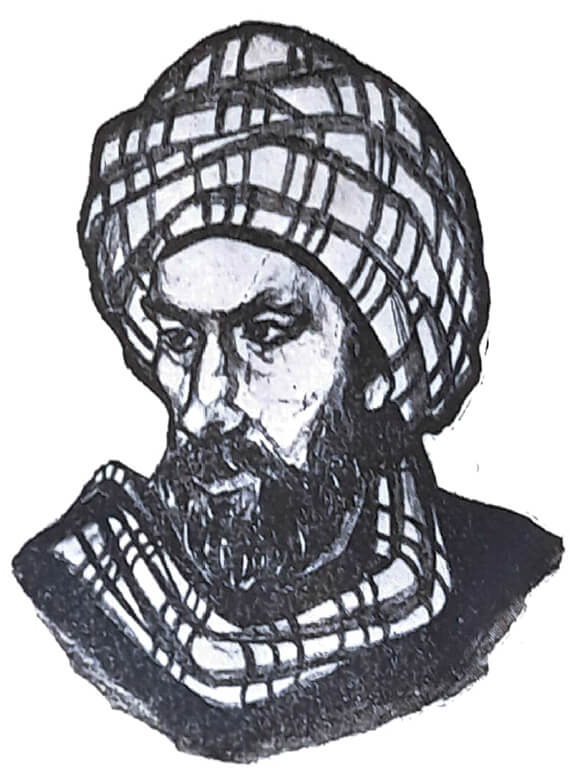
14th century
14th century
Hafiz, also known as Hafez or Shams-ud-Din Muhammad Hafiz Shirazi, was a revered Persian poet and mystic born around 1325 CE in Shiraz, Iran. He is widely celebrated for his exquisite poetry and profound spiritual insights. Hafiz’s works have had a profound and lasting influence on Persian literature and Sufism.
Growing up, Hafiz studied the Quran and Islamic philosophy. His spiritual journey took a significant turn when he met the famous Sufi teacher Attar and later his spiritual master, Sufi dervish Attar’s disciple, Rukn-ud-Din. Under Rukn-ud-Din’s guidance, Hafiz delved deep into the path of Sufism and the mystical dimensions of Islam.
Hafiz’s poetry is mainly composed of ghazals, a form of Persian poetry typically expressing themes of love, mysticism, and spirituality. He often used metaphor, allegory, and symbolism to convey profound spiritual messages. Hafiz is renowned for his ability to capture the beauty of divine love, the agony of separation, and the longing for union with the Divine Beloved.
His poetic brilliance earned him great admiration and respect during his lifetime, and he gained a significant following. However, his outspoken and unconventional style sometimes led to criticism and challenges from traditional religious authorities.
The compilation of his poems, known as the “Divan-e Hafez,” is considered a literary masterpiece. Even today, people across the world find solace, inspiration, and spiritual guidance in his poetry. Hafiz’s words continue to resonate with readers, inviting them to contemplate the deeper meanings of life, love, and spirituality.
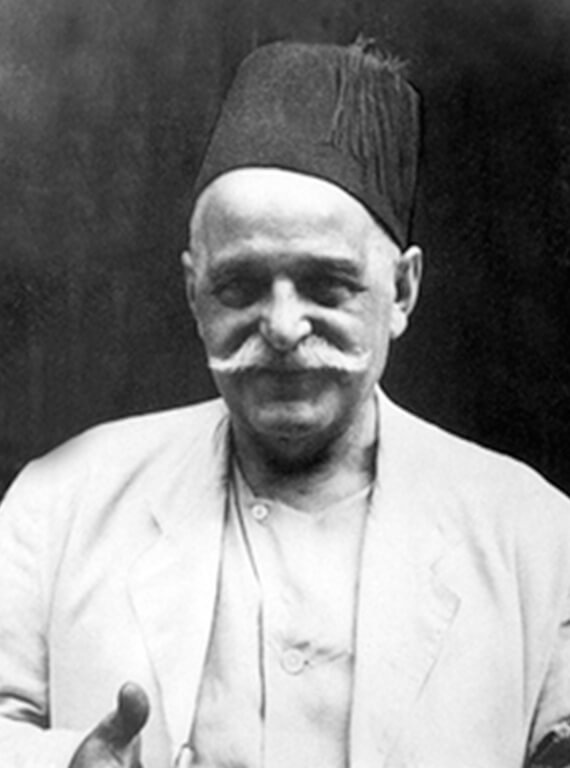
c. 1866-1949
c. 1866-1949
George Gurdjieff (c. 1866-1949) was an enigmatic spiritual teacher and mystic of Greek and Armenian descent. Born in Alexandropol (present-day Gyumri, Armenia), his early life is shrouded in mystery. Gurdjieff traveled extensively through Central Asia, the Middle East, and Europe, studying esoteric teachings and acquiring a diverse range of knowledge.
He developed the spiritual and philosophical system known as the “Fourth Way,” blending elements of Sufism, mysticism, Eastern philosophies, and Christianity. Gurdjieff believed in the possibility of spiritual awakening and self-transformation through intense inner work and self-awareness.
In the early 20th century, he established spiritual centers, including the Institute for the Harmonious Development of Man, where he taught his methods to a group of followers. His teachings emphasized the integration of physical, emotional, and intellectual aspects of human experience to attain a higher level of consciousness and understanding of one’s true self.
Gurdjieff’s writings, notably “Beelzebub’s Tales to His Grandson” and “Meetings with Remarkable Men,” detail his ideas and experiences. He emphasized the importance of conscious living, self-observation, and the need to break free from conditioned behaviors.
Despite controversies and skepticism surrounding his methods and claims, George Gurdjieff left a lasting legacy in the realm of spiritual exploration, influencing many individuals and spiritual movements worldwide.
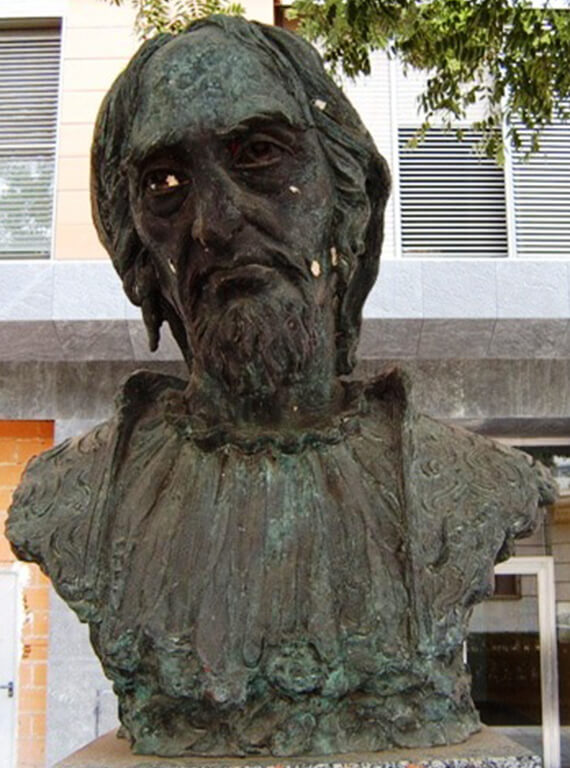
ca. 1250-1305
ca. 1250-1305
Rabbi Moses De Leon (ca. 1250-1305) was a significant figure in Jewish mysticism, particularly associated with the development of Kabbalah. He is often credited with the redaction or writing of the Zohar, a fundamental and revered text within the Kabbalistic tradition.
Born around 1250 in Guadalajara, Castile (present-day Spain), Moses De Leon grew up in a time and place deeply influenced by Jewish mysticism and philosophical thought. He became actively involved in the study of Kabbalah, a mystical interpretation of the Torah and Jewish tradition that sought to uncover hidden spiritual meanings.
Moses De Leon gained recognition for his extensive knowledge of Kabbalistic teachings and his ability to interpret complex esoteric concepts. His engagement with the Kabbalistic tradition led to his alleged authorship or compilation of the Zohar, a mystical and symbolic work considered the pinnacle of Kabbalistic wisdom.
The Zohar, written in Aramaic, is a mystical commentary on the Torah and is divided into different sections or “books,” each exploring various aspects of Kabbalistic theology, cosmology, and spirituality. It emphasizes the mystical union of the divine and the human soul.
However, the authorship of the Zohar remains a topic of scholarly debate. Some attribute its creation solely to Moses De Leon, while others suggest that it was a collaborative effort involving multiple authors.
Moses De Leon passed away around 1305 in Avila, Spain, leaving a lasting impact on the Kabbalistic tradition. The Zohar, whether entirely or in part, became a foundational text within Kabbalistic study, inspiring generations of seekers in their pursuit of spiritual insight and understanding of the divine mysteries.
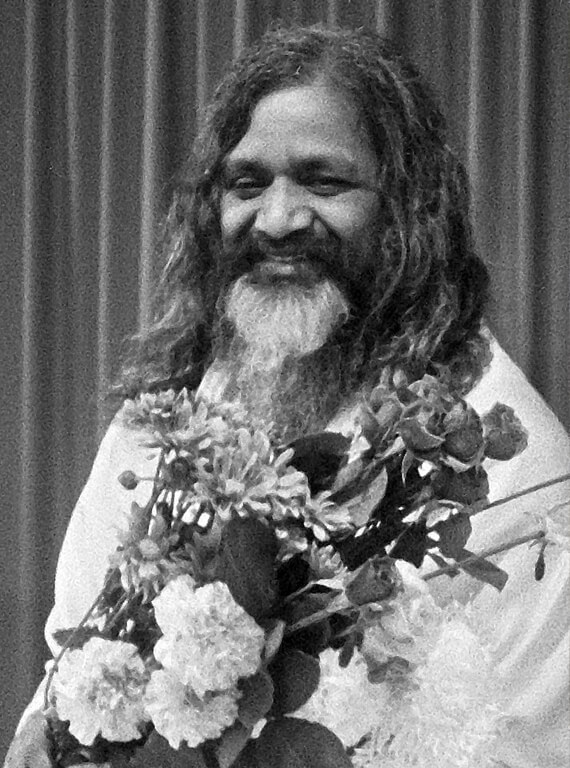
1918-2008
1918-2008
Maharishi Mahesh Yogi (1918-2008), born Mahesh Prasad Varma, was an influential Indian spiritual leader and teacher, best known for popularizing Transcendental Meditation (TM) globally. He was born on January 12, 1918, in Jabalpur, British India (present-day Madhya Pradesh, India).
Maharishi initially pursued degrees in physics and earned a degree from Allahabad University. He became a disciple of Swami Brahmananda Saraswati, a prominent spiritual leader, and spent several years under his guidance. After Swami Brahmananda Saraswati’s death, Maharishi set out to spread the knowledge and practice of Transcendental Meditation.
In the mid-1950s, Maharishi began teaching Transcendental Meditation, a technique that involves the repetition of a mantra to attain a state of deep relaxation and heightened awareness. He traveled extensively, conducting lectures and seminars on TM and its potential benefits for individuals and society.
Maharishi gained global recognition in the 1960s when he attracted high-profile followers, including The Beatles and other celebrities. The interest in TM surged, leading to the establishment of the International Meditation Society and the creation of the Spiritual Regeneration Movement.
In 1959, Maharishi introduced the Science of Creative Intelligence (SCI), which sought to integrate modern scientific knowledge with ancient Vedic principles and practices. He later founded Maharishi International University (now known as Maharishi University of Management) in Fairfield, Iowa, USA, as a center for education based on SCI principles.
Maharishi’s teachings expanded beyond meditation to include various aspects of life, such as health, education, architecture (Vastu Shastra), and agriculture (Vedic agriculture).
He passed away on February 5, 2008, in Vlodrop, Netherlands, but his legacy continues through organizations like the Global Country of World Peace, which promotes TM and related programs aimed at fostering peace and enlightenment globally. Transcendental Meditation remains practiced by millions around the world, influenced by Maharishi Mahesh Yogi’s vision of a more harmonious and spiritually enlightened society.
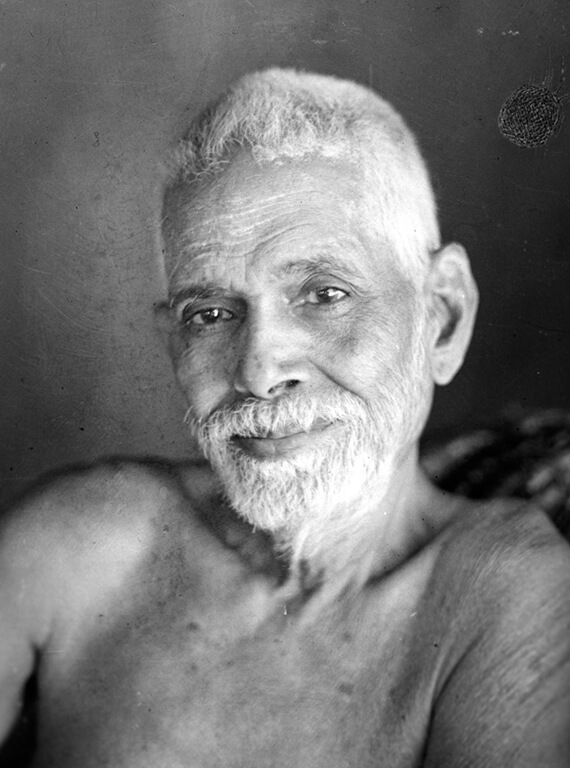
Coming soon…
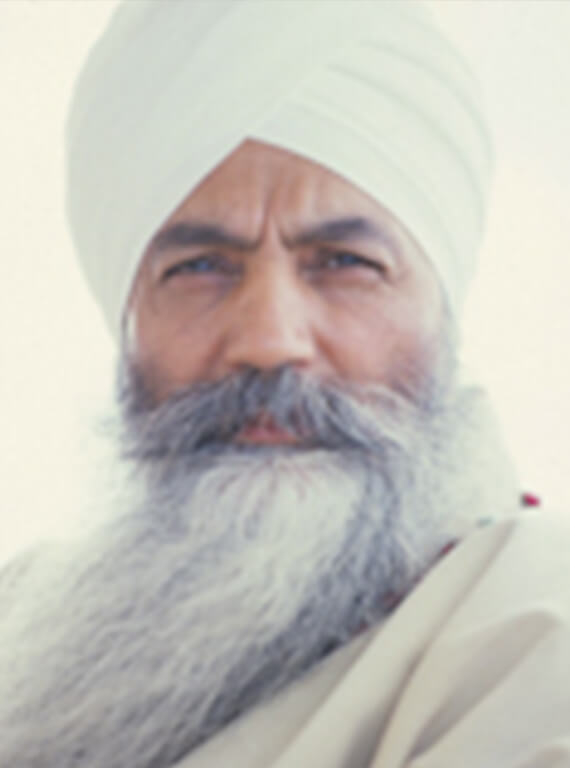
1929-2004
1929-2004
Yogi Bhajan (1929-2004) was an influential spiritual teacher, entrepreneur, and yogi who played a pivotal role in popularizing Kundalini Yoga and Sikh Dharma in the Western world. He was born Harbhajan Singh Puri on August 26, 1929, in Kot Harkarn, Punjab, British India (present-day Pakistan).
From a young age, Yogi Bhajan displayed a deep interest in spirituality, meditation, and yoga. He studied comparative religion at Punjab University and, later, pursued a degree in economics at the University of Delhi. In 1968, Yogi Bhajan emigrated to the United States and settled in Los Angeles, California.
In the U.S., he began teaching Kundalini Yoga, a practice focused on raising spiritual energy through postures, breathwork, and meditation. He founded the 3HO (Healthy, Happy, Holy Organization) to promote a yogic lifestyle and the teachings of Kundalini Yoga. Yogi Bhajan emphasized the importance of living a disciplined, conscious, and spiritually aware life.
He also played a significant role in revitalizing Sikhism in the West, founding Sikh Dharma International to share the teachings and practices of Sikhism, which he saw as complementary to Kundalini Yoga.
Yogi Bhajan was a charismatic speaker and attracted a following of individuals seeking spiritual growth, self-awareness, and physical well-being. He incorporated Sikh teachings and mantras into Kundalini Yoga, creating a unique blend of yogic and Sikh practices.
During his lifetime, he trained and inspired numerous teachers who continue to spread Kundalini Yoga and Sikh Dharma across the globe. Yogi Bhajan passed away on October 6, 2004, in Espanola, New Mexico, leaving behind a lasting legacy and a vast community of practitioners devoted to his teachings.
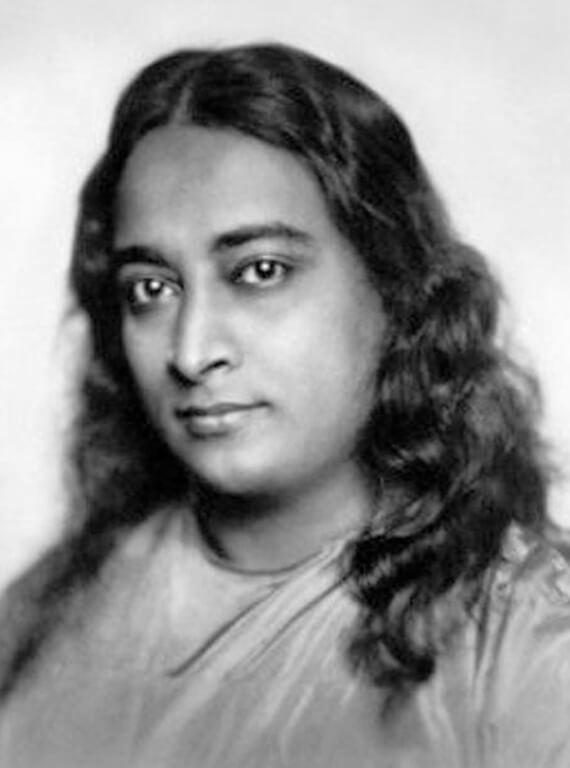
1893-1952
1893-1952
Paramahansa Yogananda (1893-1952) was a revered Indian yogi and spiritual teacher who introduced millions of Westerners to the ancient practices and philosophies of yoga and meditation. He was born Mukunda Lal Ghosh on January 5, 1893, in Gorakhpur, British India (present-day Uttar Pradesh, India).
From an early age, Yogananda displayed a deep interest in spirituality and practiced yoga and meditation fervently. He was guided by his guru, Swami Yukteswar Giri, and later attained self-realization through the practice of Kriya Yoga, a sacred technique that he made widely accessible to his students.
In 1920, Yogananda founded the Self-Realization Fellowship (SRF) in India and, in 1925, established the SRF headquarters in Los Angeles, USA. He spent many years traveling across the United States, Europe, and India, spreading the teachings of Kriya Yoga, yoga philosophy, and the universality of spiritual truths.
Yogananda’s teachings emphasized the harmony and unity of all religions, highlighting the underlying spiritual principles that unite humanity. His seminal work, “Autobiography of a Yogi,” published in 1946, is a spiritual classic that has inspired countless individuals on their spiritual journey.
He stressed the importance of daily meditation, self-discipline, and attunement with the divine to achieve spiritual awakening and self-realization. His message resonated with a wide audience, attracting followers from diverse backgrounds and faiths.
On March 7, 1952, while giving a public lecture in Los Angeles, Yogananda entered mahasamadhi, a yogi’s conscious exit from the body at the time of physical death. His legacy lives on through the Self-Realization Fellowship, which continues to disseminate his teachings, yoga techniques, and the spiritual science of Kriya Yoga to seekers around the world.
Yogananda’s profound impact on spiritual seekers, the integration of Eastern teachings in the West, and his role in popularizing yoga and meditation in the West cement his status as one of the most influential spiritual figures of the 20th century.
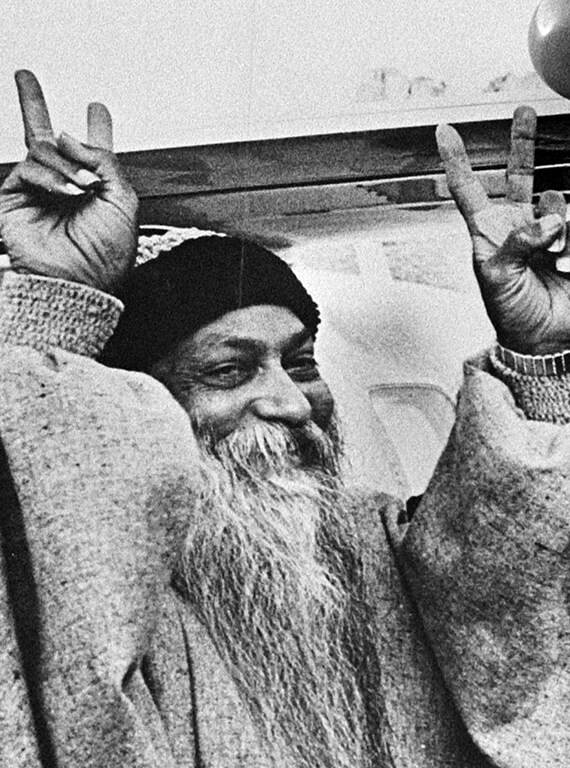
1931-1990
1931-1990
Osho, born Chandra Mohan Jain (1931-1990), was an influential spiritual teacher, philosopher, and public speaker known for his dynamic and unconventional approach to spirituality. He was born on December 11, 1931, in Kuchwada, Madhya Pradesh, British India (present-day Madhya Pradesh, India).
From an early age, Osho displayed a keen interest in spirituality and a rebellious nature. He earned a degree in philosophy from the University of Saugar and later became a professor. In the 1960s, he resigned from his teaching position and embarked on a journey as a spiritual teacher, adopting the name “Bhagwan Shree Rajneesh.”
Osho emphasized individuality, personal growth, and the integration of spirituality into daily life. He advocated for self-awareness, meditation, and the exploration of human consciousness. Osho’s teachings often challenged traditional beliefs and societal norms.
In the 1970s, Osho gained a significant following, and he and his followers established an intentional community called Rajneeshpuram in Oregon, USA. However, the community faced controversies and legal challenges, which led to Osho’s departure from the United States.
Osho spent his later years traveling and giving talks, attracting a diverse following from around the world. He addressed various topics, including love, meditation, consciousness, and the human experience. He developed several meditation techniques, such as the “Dynamic Meditation,” “Kundalini Meditation,” and “Osho Nadabrahma Meditation.”
He authored numerous books covering a wide range of subjects, and his prolific writings continue to influence spiritual seekers globally. Some of his popular works include “The Book of Secrets,” “Awareness: The Key to Living in Balance,” and “The Art of Dying.”
Osho passed away on January 19, 1990, leaving a lasting legacy as a spiritual teacher and philosopher, with a significant impact on the spiritual landscape and contemporary discourse on consciousness and personal growth.
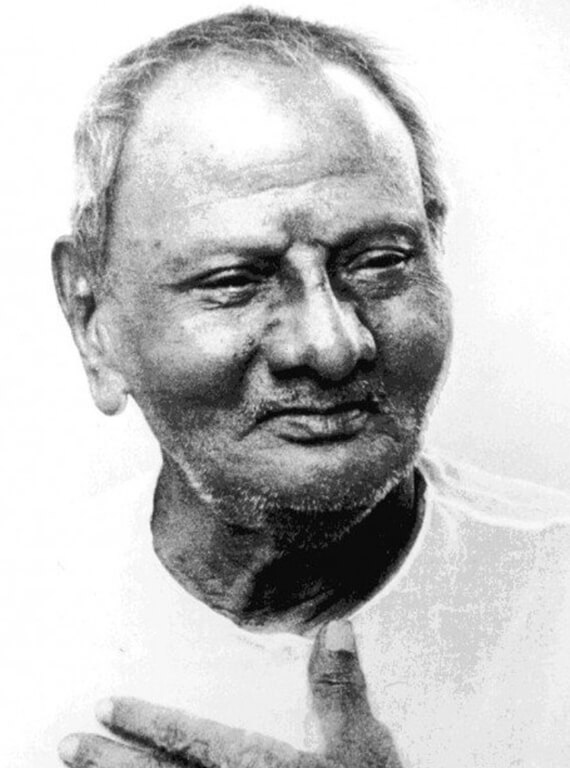
1897-1981
1897-1981
Nisargadatta Maharaj (1897-1981), born Maruti Shivrampant Kambli, was a revered Indian spiritual teacher and philosopher, best known for his profound teachings on Advaita Vedanta, a non-dualistic school of Hindu philosophy. He spent his life in Mumbai, India.
Growing up in the small village of Kandalgaon in Maharashtra, India, Nisargadatta led a humble life, initially working as a petty trader and later as a small-time employee in Mumbai. He underwent a profound spiritual awakening at the age of 34, after encountering his guru, Siddharameshwar Maharaj.
Under Siddharameshwar Maharaj’s guidance, Nisargadatta engaged in intense spiritual practice and self-inquiry. He experienced a powerful shift in consciousness, realizing the true nature of the self and the interconnectedness of all existence. After his guru’s passing, Nisargadatta adopted a life of renunciation and began sharing his insights with seekers.
Nisargadatta Maharaj’s teachings were centered on the understanding of one’s true nature, beyond the limitations of body and mind. He emphasized direct experiential realization of the “I Am” or pure awareness, the fundamental reality that transcends individual identity.
His famous book “I Am That” is a compilation of his dialogues with seekers, offering profound insights into the nature of reality, consciousness, and the path to self-realization. His teachings were often intense and uncompromising, urging seekers to question their beliefs and transcend their egoic identifications.
Many spiritual seekers from around the world were drawn to Nisargadatta Maharaj’s presence and teachings. He conducted regular satsangs (spiritual gatherings) in a small room in his tenement in Mumbai, where seekers could engage in discussions and receive guidance on the spiritual path.
Nisargadatta Maharaj’s teachings have had a lasting impact on the spiritual community, influencing various contemporary spiritual teachers and practitioners. His emphasis on direct experience and the understanding of consciousness continues to guide seekers on the path to self-realization.
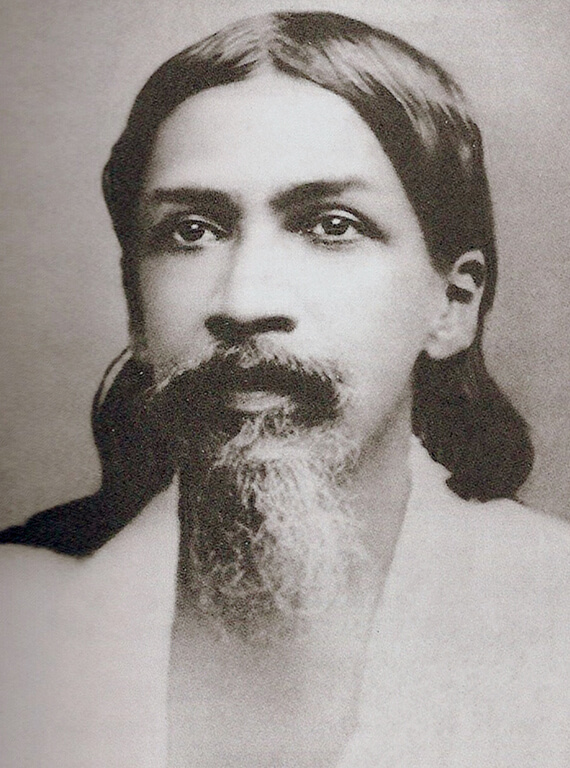
1872-1950
1872-1950
Sri Aurobindo, also spelled as Sri Aurobindo, (1872-1950) was a prominent Indian philosopher, yogi, poet, and spiritual leader. He played a significant role in the Indian independence movement and was a key figure in the development of modern Indian philosophy and spirituality.
Born on August 15, 1872, in Calcutta, British India (present-day Kolkata, India), Aurobindo was educated in England, where he excelled in academics and also delved into literature and spirituality. He returned to India in 1893 and actively participated in the struggle for independence from British rule.
As a nationalist, Aurobindo initially advocated for revolutionary methods to achieve independence. However, his focus later shifted towards spiritual development and the role of spirituality in social transformation. He withdrew from active politics in 1910 to devote himself entirely to spiritual pursuits.
Aurobindo went into seclusion and intense spiritual practice, during which he experienced profound states of consciousness. He developed the Integral Yoga, a spiritual practice aimed at the evolution of human consciousness and the integration of the spiritual and material dimensions of life.
In 1926, he founded the Sri Aurobindo Ashram in Pondicherry, India, where individuals could practice Integral Yoga and work towards spiritual realization. Aurobindo’s teachings emphasized the divine potential within every individual and the ultimate transformation of humanity into a divine consciousness.
He wrote extensively on philosophy, spirituality, and the significance of spiritual evolution. Some of his notable works include “The Life Divine,” “Savitri: A Legend and a Symbol,” and “Essays on the Gita.”
Sri Aurobindo passed away on December 5, 1950. His teachings and influence on spirituality, education, and philosophy continue to inspire practitioners and seekers from various backgrounds, fostering a vision of a harmonious and spiritually awakened world.
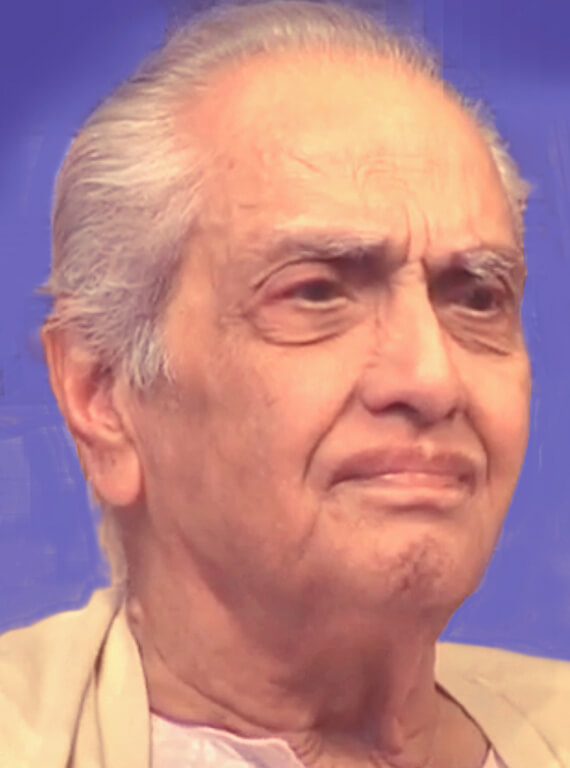
1917-2009
1917-2009
Ramesh Balsekar (1917-2009) was an esteemed Indian philosopher and spiritual teacher, known for his teachings on Advaita Vedanta, a non-dualistic school of Hindu philosophy. Born in Mumbai, India, Balsekar initially pursued a successful career in banking and rose to a prominent position as the General Manager of the Bank of India. However, in the 1970s, he experienced a spiritual awakening that redirected the course of his life.
After his retirement, Balsekar immersed himself in the study of Advaita Vedanta under the guidance of the renowned sage Sri Nisargadatta Maharaj. Nisargadatta Maharaj’s teachings deeply influenced Balsekar and became the cornerstone of his own spiritual insights.
Ramesh Balsekar’s teachings emphasized the concept of non-doership, suggesting that individuals are not the authors of their actions; they are mere instruments through which the cosmic play unfolds. He encouraged a perspective of acceptance, detachment, and living in the present moment.
Balsekar authored several books, including “Consciousness Speaks,” “Pointers from Nisargadatta Maharaj,” and “Explorations into the Eternal.” Through his writings, talks, and dialogues with spiritual seekers, he conveyed complex philosophical concepts in a simple, accessible manner.
He traveled globally, conducting satsangs (spiritual gatherings) and sharing his insights with people seeking spiritual guidance. Many followers and seekers found solace and clarity in his teachings, making him a well-respected figure in the realm of Advaita Vedanta.
Ramesh Balsekar’s contributions to the understanding of non-duality and the paths to spiritual awakening continue to be cherished and studied by individuals exploring the philosophy of Advaita Vedanta.
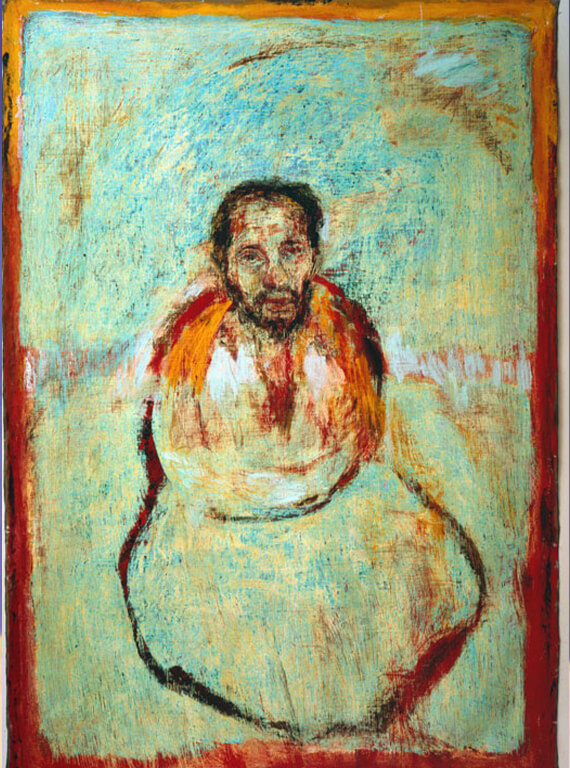
1908-1982
1908-1982
Swami Muktananda (1908-1982) was a prominent spiritual teacher and guru in the tradition of Siddha Yoga. He was born as Krishna Rai in the small village of Udiyana, in present-day Bihar, India. At a young age, he displayed a deep inclination towards spirituality and a desire for self-realization.
Muktananda’s spiritual journey was profoundly influenced by his encounters with the revered Siddha yogi, Bhagavan Nityananda, whom he met in 1947. Under Nityananda’s guidance, he experienced profound spiritual awakening and realized his life’s purpose as a spiritual teacher.
In 1947, after Nityananda’s passing, Muktananda went into seclusion and intense meditation, delving deeply into the practices of Kundalini yoga and meditation. Over the years, he gained a significant following and began initiating disciples into the practice of Siddha Yoga, a path focused on spiritual awakening and union with the Divine through meditation, chanting, and self-inquiry.
Muktananda’s teachings emphasized the importance of self-awareness, devotion, and surrender to the inner spiritual power, Kundalini Shakti, which he believed to reside within every individual. He traveled extensively, conducting spiritual retreats (satsangs) and sharing his insights on spirituality and the yogic path.
In the 1970s, he gained international recognition, and his organization, Siddha Yoga, expanded globally. Muktananda authored several books, including “Play of Consciousness” and “The Nectar of the Lord’s Feet.” Despite controversy surrounding certain aspects of his personal life, his impact on the spiritual community and the dissemination of yogic teachings remains significant.
After his passing in 1982, his spiritual legacy continues through Siddha Yoga, inspiring countless individuals worldwide to pursue spiritual growth and self-realization. His teachings and practices continue to be shared and propagated by his disciples and the Siddha Yoga community.
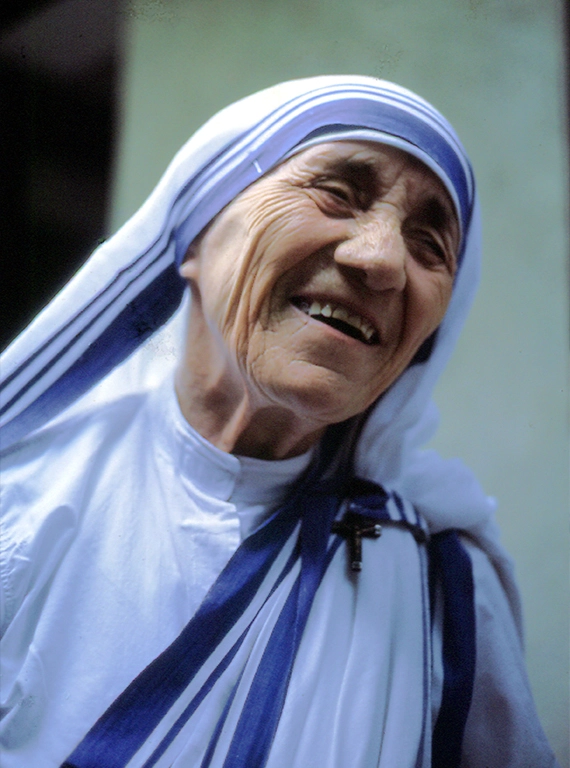
1910-1997
1910-1997
Mother Teresa, born Agnes Gonxha Bojaxhiu (1910-1997), was an Albanian-Indian Roman Catholic nun and missionary known for her unwavering dedication to serving the poorest of the poor. She was born on August 26, 1910, in Skopje, which is now part of North Macedonia.
At the age of 18, Agnes joined the Sisters of Loreto, an Irish community of nuns with missions in India. She took the name “Sister Mary Teresa” after St. Thérèse of Lisieux. In 1929, she arrived in India and began her novitiate in Darjeeling, eventually moving to Kolkata (Calcutta) to teach at St. Mary’s High School.
In 1946, Sister Teresa experienced a profound calling during a train ride to Darjeeling, which she later described as a “call within a call.” She felt an intense desire to work among the poor, living and caring for them. This led to the formation of the Missionaries of Charity in 1950, a religious congregation focused on serving the “hungry, the naked, the homeless, the crippled, the blind, the lepers, all those people who feel unwanted, unloved, uncared for throughout society, people that have become a burden to the society and are shunned by everyone.”
The Missionaries of Charity grew rapidly, establishing hospices, homes for the dying, orphanages, and centers for those suffering from leprosy and other diseases. Mother Teresa, revered for her compassion and dedication, became an iconic figure, receiving numerous awards, including the Nobel Peace Prize in 1979.
Throughout her life, Mother Teresa faced challenges and criticisms, including concerns about the quality of care in her facilities. However, her devotion to serving the destitute and marginalized remained unwavering.
She passed away on September 5, 1997, in Kolkata. The Missionaries of Charity, with thousands of sisters and volunteers, continues its work worldwide, providing care and support to the needy, carrying on Mother Teresa’s legacy of compassion and love for humanity.
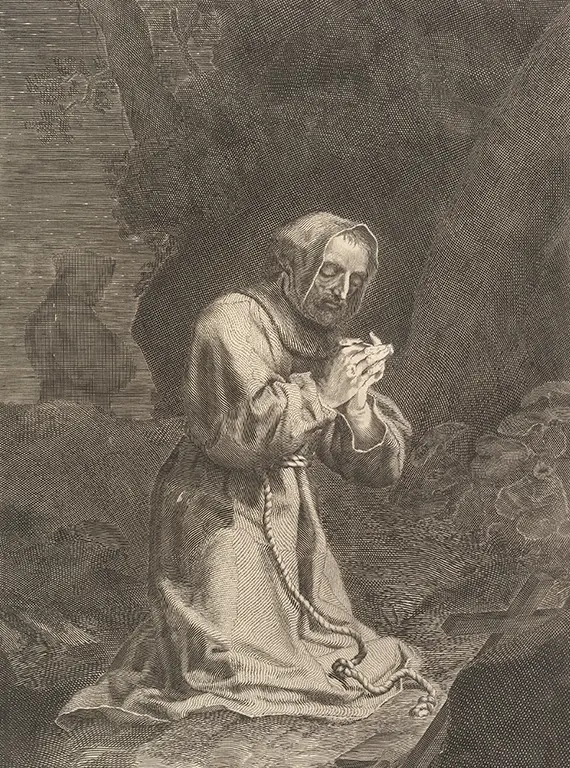
Coming soon…
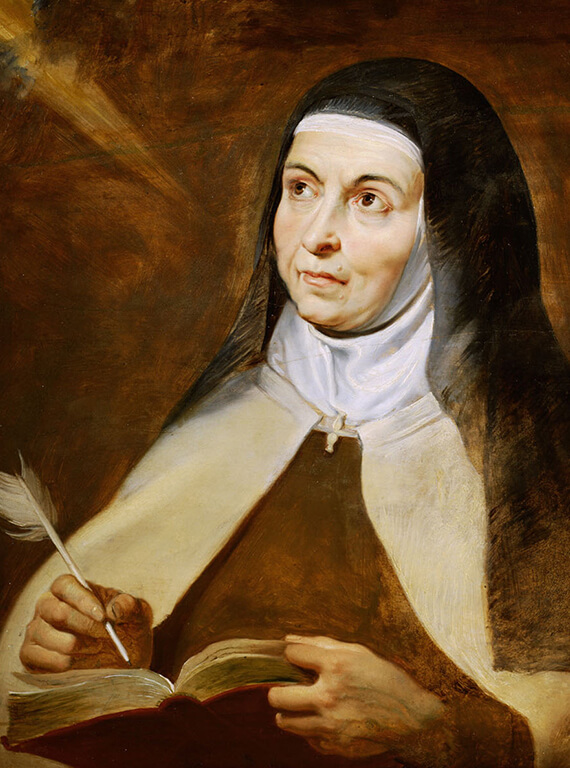
Coming soon…
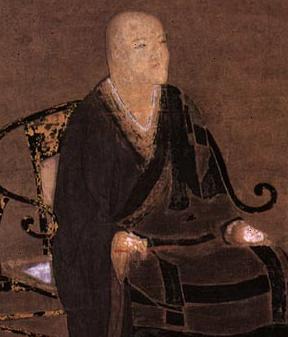
Dōgen Zenji (also known as Dōgen Kigen) was a revered Japanese Zen master, philosopher, poet, and the founder of the Sōtō school of Zen in Japan. He was born on January 19, 1200, in Uji, Kyoto, Japan. Dōgen’s life was profoundly shaped by his quest for spiritual truth and his dedication to Zen practice.
At a young age, Dōgen experienced the loss of his father, which deeply affected him and set him on a path of spiritual inquiry. He studied Buddhism under various teachers and explored different Buddhist traditions, seeking a genuine understanding of the dharma.
In 1223, Dōgen traveled to China, seeking to study Zen firsthand at the source. He spent several years training under the Caodong (Sōtō in Japanese) master Rujing. Dōgen deeply absorbed the teachings and practices of the Caodong tradition and received dharma transmission, authorizing him as a Zen teacher.
Upon his return to Japan in 1227, Dōgen began sharing his understanding of Zen, emphasizing zazen (meditation) as the core of the practice. He founded Eiheiji, a monastery in the mountains, as a center for Zen training and practice, promoting the principles of shikantaza (just sitting) and kinhin (walking meditation).
Dōgen’s major work, the “Shōbōgenzō,” is a collection of essays and writings that articulate his teachings and insights into Zen. His writings are renowned for their depth, clarity, and poetic expression.
He encouraged practitioners to cultivate an awakened mind in their daily activities and see the inherent Buddha nature in all beings. Dōgen Zenji passed away on September 22, 1253, but his teachings continue to inspire countless practitioners and remain fundamental to Sōtō Zen practice, influencing Zen Buddhism in Japan and beyond.

1904-1971
1904-1971
Shunryu Suzuki Roshi (1904-1971) was a prominent Japanese Zen master and a pivotal figure in introducing Zen Buddhism to the West. He was born on May 18, 1904, in Shizuoka, Japan. From a young age, Suzuki displayed an interest in Zen practice and philosophy.
Suzuki studied at Komazawa University in Tokyo, where he immersed himself in Zen practice under the guidance of So-on Roshi. In 1925, he was ordained as a Soto Zen monk, marking the beginning of his formal Zen training. He furthered his studies at Engaku-ji in Kamakura and received Dharma transmission, designating him as a Zen teacher.
In 1959, Suzuki moved to the United States at the age of 55 to serve as the head priest of the Soto Zen temple in San Francisco, which later became known as the San Francisco Zen Center. He played a vital role in the establishment and growth of Zen practice in the West.
Suzuki’s teaching style was characterized by simplicity and directness. He emphasized the practice of zazen (meditation) as a way to experience enlightenment and encouraged students to cultivate a “beginner’s mind,” free from preconceived notions. His book “Zen Mind, Beginner’s Mind” encapsulates many of his teachings and remains a classic in the field of Zen literature.
He attracted a dedicated group of students, and his teachings greatly influenced the development of Zen Buddhism in the West. Suzuki’s emphasis on mindfulness, meditation, and the integration of Zen practice into daily life has left a lasting impact on the broader spiritual community.
Shunryu Suzuki Roshi passed away on December 4, 1971, leaving behind a legacy of wisdom and a thriving lineage of Zen practitioners committed to the practice and dissemination of Zen Buddhism.

Bodhidharma, was a legendary and historical figure who played a significant role in the development and transmission of Chan Buddhism (Zen Buddhism in Japan) from India to China. While historical details about his life are often obscured by legend, Bodhidharma is considered a revered spiritual figure.
Traditionally believed to have been born in Kanchipuram, Tamil Nadu, South India, around the 5th or 6th century CE, Bodhidharma is thought to have been a prince or high-ranking member of the Kanchipuram royal family. He is said to have renounced his royal status to become a monk and travel in pursuit of spiritual enlightenment.
According to legend, Bodhidharma journeyed to China, where he arrived at the Shaolin Monastery in Henan province around 520 CE. The story goes that he spent years in meditation, developing a system of exercises to strengthen the monks’ bodies and minds, eventually giving rise to Shaolin Kung Fu.
His teachings emphasized the direct experience of enlightenment and the practice of meditation to attain spiritual awakening. The “Bloodstream Sermon” and “Two Entrances and Four Practices” are attributed to him and contain fundamental principles of Chan Buddhism.
Bodhidharma’s influence on Chan Buddhism was profound, and he is revered as the first patriarch of Chan in China. His teachings and the Zen tradition he inspired continue to have a lasting impact on Zen practitioners and the broader realm of Buddhism, especially in East Asia. While the historical accuracy of certain details remains debated, Bodhidharma’s spiritual legacy remains a foundational aspect of Zen Buddhism.

1915-1979
1915-1979
Eva Pierrakos (1915-1979) was an Austrian-born spiritual teacher and the channeler of “The Pathwork,” a body of spiritual teachings aimed at personal growth and self-realization. Born in Vienna, she was the daughter of the famous Austrian author Jacob Wassermann. Eva experienced a troubled childhood due to the challenging circumstances of her family during World War I and the subsequent economic hardships.
In 1939, she married John Pierrakos, an American physician. The couple later moved to the United States, where Eva began her journey into spiritual exploration. Inspired by her interest in psychology, philosophy, and metaphysics, Eva delved into various spiritual practices and eventually began channeling spiritual guidance through a process she referred to as “the Guide.”
Starting in the 1950s, Eva channeled a series of over 250 lectures collectively known as “The Guide Lectures” or “The Pathwork Lectures.” These teachings aimed to guide individuals in understanding and transforming their psychological and spiritual obstacles to achieve a higher level of consciousness and inner peace.
Eva and her husband, John Pierrakos, founded the Pathwork Center in New York, where they held workshops and offered counseling based on the teachings she channeled. John contributed to the work by integrating his knowledge of psychology and body-centered therapy into the teachings.
Eva Pierrakos’ work emphasizes self-awareness, self-acceptance, and personal responsibility, encouraging individuals to integrate their emotions, thoughts, and behaviors to achieve personal growth and spiritual development. The Pathwork teachings continue to inspire and guide seekers on their paths toward inner transformation and self-discovery.
Modern
MYSTICS
- Amma
- Adam Chaksfield
- Adyashanti
- Alberto Villohdo
- Alex Grey
- Amit Goswami
- Anna-Lisa
- Anthony Lemme
- Barbara Brennan
- Byron Katie
- Carolyn Myss
- Carole Griggs
- David Deida
- Dean Radin
- Diane Musho Hamilton
- Dustin Diperna
- Eckhart Tolle
- Genpo Roshi
- Harry Palmer
- Jaqueline O'Keefe
- Jeff Foster
- Joe Dispenza
- Joel Goldsmith
- John Hagelin
- Jon Kabat-Zinn
- Judith Blackstone
- Ken Wilber
- Kyle Cease
- Layla Martin
- Loch Kelly
- Michael Beckwith
- Michael Spatuzzi
- Mooji
- Paul Chem
- Rob MacNamara
- Rupert Spira
- Raina DeLear
- Sharon Sandberg
- Sally Kempton
- Sonya Biblios
- Tara Brach
- Teal Swan
- Thomas Hubl
- Venant Wong

USA | 1962--
USA | 1962--
Adyashanti is an American spiritual teacher and author from the San Francisco Bay Area who offers talks, online study courses, and retreats in the United States and abroad. He is the author of numerous books, CDs and DVDs and, together with his wife Mukti, is the founder of Open Gate Sangha, Inc.

Coming Soon…

Coming Soon…

Carole Griggs, is an exemplar of embodied awakening at work and in the world. She is a pioneer and leader in the areas of consciousness evolution, human potential and the integration of technology, psychology and spirituality.
Griggs is a Graduate-level University professor in Consciousness and Transformative Studies, international speaker, leadership development consultant, published author of Space to See Reality, and executive coach for leaders in Big Tech in Silicon Valley and around the world.
She is also a developer of transformative technology tools focused on human potential and consciousness evolution including
being an integral part of an important Artificial Intelligence research project called Loving AI, and co-creator of the iConscious Human Development model, a comprehensive and integrative meta-framework researched and developed to accelerate the process of maximizing full human potential both individually and collectively. Dr. Carole Griggs holds a Doctorate degree (Ph.D.) in Professional Coaching and Human Development, a Masters degree in Education, and a Bachelors degree in Science.
Carole’s mission is to help streamline and accelerate conscious human development for the evolution of humanity’s full potential, and to create various educational platforms and technology tools to help scale this process so that embodied awakening across all domains of life is the standard.

Coming Soon…

Coming Soon…

Coming Soon…

Coming Soon…

Coming Soon…

Coming Soon…

Coming Soon…

Coming Soon…

Coming Soon…

Coming Soon…

Coming Soon…

Coming Soon…

Coming Soon…

For the past 30 years Raina has intimately discovered the soft, love- filled, felt sense of Life. She has deeply explored and cultivated the embodiment of many of the territories within our physical, emotional, mental and spiritual bodies. In her explorations, Raina is blessed to have studied with gifted teachers, scientists, healers and sages, including earning a Doctorate in Philosophy.
She is the co-founder and lead teacher of Luminous Awareness Institute, along with Anna-lisa Adelberg, a leading school for healing and Awakening. Her gifts for deeply seeing, feeling and understanding people in their depth and range, from parts unhealed, to their radiant majesty and the divine mystery living through us all, are sourced from a deep caring and stewardship toward a better world for all.

1984
1984
Teal Swan, born Mary Teal Bosworth on June 16, 1984, emerged from a tumultuous childhood marked by severe abuse in Santa Fe, New Mexico. Despite the darkness and trauma of her past, she transformed her experiences into a beacon of light and catalyst for positive change for millions worldwide, advocating for
the transformation of human suffering into empowerment and authenticity.
In 2012, Teal founded the Headway Foundation, a nonprofit organization dedicated to fostering positive world change. Her visionary approach to spirituality and self-help distinguishes her as a guide for those seeking deeper truths, even if they challenge conventional comfort.
Teal’s teachings resonate with individuals who are ready to confront reality head-on, acknowledging both its positive and uncomfortable aspects. Through her work, she empowers others to embrace truth and take decisive steps towards personal growth and fulfillment.
She is renowned for her “Ask Teal” YouTube series, where she candidly addresses topics ranging from emotional healing to consciousness. Additionally, she has authored several internationally published books and created numerous frequency paintings.
In addition to her extrasensory abilities, Teal recognizes the importance of acknowledging and addressing human suffering, grounding her teachings in the reality of the human experience. Her journey from victim to empowered healer exemplifies the transformative power of embracing truth and authenticity in one’s life.

1961
1961
Diane Musho Hamilton is a renowned spiritual teacher, facilitator, author and award-winning mediator known for her profound wisdom. compassion, masterful relating and spiritual embodiment. Born on May 20, 1961, she has dedicated her life to exploring and integrating multiple wisdom traditions, fostering peace and understanding among individuals and communities. With a diverse background that includes training in Zen Buddhism, Integral Theory, and conflict resolution, Diane has become a respected figure in the fields of meditation, facilitation, and integral practice. Her unique ability to bridge different perspectives and honor the complexity of human experience has made her a sought-after teacher and mentor.
Throughout her career, Diane has worked extensively as a mediator, helping individuals and groups navigate challenging conversations and find common ground. Her commitment to healing divides and fostering genuine connection has influenced countless lives and contributed to the evolution of conflict resolution practices. As an author, Diane has shared her insights in several transformative books including “Everything is Workable: A Zen Approach to Conflict Resolution” and “The Zen of You and Me: A Guide to Getting Along with Just About Anyone.” Diane Musho Hamilton is also recognized for her teaching and facilitation skills. She has conducted workshops, retreats, and training programs worldwide, guiding individuals and organizations toward greater self-awareness, empathy, and conscious communication. Her teachings often incorporate mindfulness practices, embodiment exercises, and integral perspectives to support holistic growth and transformation.
Her warm and compassionate presence, combined with her deep understanding of human dynamics, has made Diane a beloved mentor and guide for many on their spiritual and personal journeys. Her commitment to fostering understanding, empathy, and harmony continues to inspire and uplift people around the world. Today, Diane Musho Hamilton resides in a beautiful community in the Pacific Northwest, where she continues to teach, write, and facilitate transformative experiences for individuals and groups. Her work serves as an invitation to embrace our shared humanity and cultivate a more conscious and compassionate world.

1942
1942
Byron Katie, born Byron Kathleen Reid on December 6, 1942, is an American author and speaker renowned for developing “The Work,” a self-inquiry method. Raised in Barstow, California, Katie’s life took a transformative turn in the late 1980s. After years of struggling with depression, addiction, and agoraphobia, she says she discovered that believing her thoughts created suffering. Following this realization, Byron Katie developed a simple yet powerful method, The Work, which involves
questioning one’s thoughts via her unique approach to self-inquiry.
Through this practice, she experienced a profound and sustained Awakening. Through her process of The Work, she empowers people to ask themselves a series of questions to free their mind from the negative grip of negative thoughts and limiting beliefs to alleviate suffering, and remember the True Nature of Awareness.
Katie has authored several books, including “Loving What Is,” which introduced The Work to a broader audience. But in conducting workshops she has gained recognition for her method of self-inquiry, helping hundreds of thousands realize the simplicity of finding freedom from their mind, revealing the essential joy that lives within the heart of us all. And she invites people to not just believe her but to test it for themselves.
Byron Katie continues to teach and inspire people worldwide to do The Work through her workshops, books, and public speaking engagements, emphasizing the importance of
listening to the answers they find within, questioning internal narratives and opening their minds to profound, spacious, and life-transforming insights.

USA | 1962--
USA | 1962--
Anna-Lisa Adelberg is an internationally renowned healer and non-dual spiritual teacher and healer. She is well known for her capacity to articulate and transmit about awareness, the mechanics of subtle phenomena and her uncanny ability, to as her students say, “know what’s going on inside of me.”
Anna-Lisa is the co-founder, along with Raina Delear, of the Luminous Awareness Institute and has supported thousands of students and clients on the path of awakening.
She has developed and teaches a groundbreaking system, pioneering the integration of a contemporary nondual awakening path with a healing path. Her work is a synthesis of over 25 years and supports the realization of the essential being of who we already are, with practices and inner technologies from a wide variety of sources: Tibetan Buddhism, developmental psychology, neurophysiology, Chi Gong, and subtle energy.
Anna-Lisa is dedicated to creating a world of wakefulness, attunement, care and liberation for all beings.
She is a highly sought after healer and teacher and has guided some of the world’s most renowned leaders, healers, and spiritual teachers.

1953
1953
Amma, whose full name is Mata Amritanandamayi, was born on September 27, 1953, in a small village in Kerala, India. From a young age, she exhibited deep compassion and empathy towards others, often comforting and helping those in need. This innate ability to offer solace eventually led her to become a spiritual leader and humanitarian.
Embracing a life dedicated to serving humanity, Amma’s teachings emphasize love, compassion, and selfless service. She is widely known for her practice of embracing people, offering a motherly hug to millions around the world, symbolizing universal love and acceptance.
In 1981, she established the Mata Amritanandamayi Math, a spiritual organization, to formalize her humanitarian work. The organization has since grown into a global network engaged in various charitable initiatives, including healthcare, education, and disaster relief.
Amma’s contributions extend beyond her compassionate actions; she also delivers spiritual discourses, stressing the importance of spirituality and fostering a sense of inner peace. Her teachings draw from various religious and philosophical traditions, aiming to unite people and promote harmony.
Often referred to as the “Hugging Saint,” Amma’s influence reaches far and wide, transcending cultural and geographical boundaries, as she continues to inspire countless individuals to live a life guided by love and service to others.
Mystics of the Ages FAQ
What is a Mystic? A Mystic is a person who after some period of seeking, now directly feels a deep and direct connection with the Divine. Usually they have sought to explore the depths of consciousness, often through some combination of contemplation, energetic practices, intuitive insight or spontaneous spiritual experience. Ultimately, they have transcended the limits of ordinary perceptions, while simultaneously still having all of the previous human functions: a physical, thoughts, emotions, etc.
Instead, what is a Mystic now transcends and includes all of that while living in a sort of high definition with the addition of various advanced potentials, latent in all of us, yet activated and awakened in Mystics. The Mystic is no longer only looking out of their experience filtered just through their own mind and sense of self, instead they have expanded open as Awareness Itself, with the felt sense of being one with or unified with this Source. This Awareness which is now felt to immersively animate them also tends to inspire their work and life in service to the greater the healing, development and Awakening and humanity.
So then you might ask well what is a Mystic? The commonality between all Mystics, whether modern Mystics alive today or ancient Mystics who previously walked this Earth, is that they can directly feel a direct connection with the Divine, the Loving Awareness that lives through all things. What is a Modern Mystic or who rather include beings like Eckhart Tolle, Adyashanti, Byron Katie, Jacqueline O’Keefe, Thomas Hubl, Sally Kempton, Ken Wilber, Diane Hamilton, etc. Some of the Ancient Mystics retreated from the world into monasteries, ashrams and hermitages, while others were sometimes persecuted by Inquisitions, Government Officials and Fundamentalist Religious Institutions of old, and had to practice in hiding.
Though it has not always been safe for Mystics on Planet Earth, some believe that those who have come before have helped pave the way and evolved consciousness on this planet enough for it to now be safe for Modern Mystics to be more in the world. Thus some of the Modern Mystics alive today are also householders, parents, spouses, college graduates, and who make videos on social media. While Modern Mystics may have experienced different early lives, at a certain point whether all at once in the case Eckhart Tolle and Byron Katie or gradually stabilized over some years as is the case for most of the others, eventually all Mystics are able to directly feel unified with Awareness Itself.
Some people wonder the difference between what is a Mystic versus a Spiritual Seeker. There seems to be a fascination and insatiable curiosity of “sensing something more” that can initially activate the Spiritual Seeker to leave behind convention to set out on their spiritual quest. Without the guidance and curiosity of the Seeker, many stay safely imprisoned in the comforts of the known. Sometimes pain, loss, illness or crisis can spurn the seeker’s search for something more and the alleviation of their suffering. For others, they might already be living a good or comfortable life, but some deep inner thirst to know more, actualize their potential and feel closer to the Divine draws them forward into the Great Mystery.
And that Seeker past can keep them going on their path, for many years and for some, the entirety of their lives. Eventually, for some, the parts of the sense of self relax, including the Seeker part, revealing the Openness of Awareness that has been here all along. It’s like you needed the map and the motivation to get you to the gates. In this case to mentally learn more about spiritual concepts, to heal past emotional trauma stored on your body, to become more embodied, to open your energetic channels, to learn to focus you attention and quiet your mind, etc.
Only now that the Seeker has gotten you to the foot of the gates, now in order to get through the gates, one must relax the very thing that got them there, the mind and sense of self. This is what in Zen as the Gateless Gate. Because in the relaxation of exclusive identification, with the mind (including maps and mental conceptualizations) and self (including the Seeker), there is the realization that there never was a locked gate in the first place. But now in the expanded Awareness, there is a felt sense connectedness to all of Life, which is one of the defining features of the Mystic. So, while both can be very spiritually inclined, If you want to know what is a mystic is, the Mystic has found and can feel, the Loving Awareness that the Seeker seeks. The great paradox is that the Seeker is needed to find It, but the Seeker ultimately has to relax for Awareness to be found. And a Mystic deeply understands this paradox, because they feel both their uniqueness and the Unified quality of Awareness in which everything else simultaneously arises.
The initial curiosity of sincerely asking how to become a Mystic can be a great start. If you are someone who is interested in how to become a Mystic, then you have probably been sensing there is something more to life than just the latest societal conventions and aspirations.
Have you heard the whispers? Life Itself calling you, trying to wake you up, inviting you into the path of the Mystics. Maybe you were living the good life, but had been having this vague sense there was something more. Perhaps you had a glimpse of a profound state; feeling wide open and connected to everything or your sense of “you” as a foxed point of focus temporarily relaxing and instead there was the felt sense of being the whole moment, Awareness Itself. Or maybe your sensing something more was an invitation through challenge that might have come in the form of pain, loss, illness or crisis—seemingly forcing you to change and grow.
Which ever form the calling initially comes in, most eventually say yes to starting becoming more conscious. In the new age this often, but not always, can start with learning about manifesting, having a more positive mindset, getting physically healthier, as well paying more attention to the signs and synchronicities—a phase which can be so magical and exciting. Yet, as some go deeper, they realize there is much more. As they continue there is an inclination to get more embodied, open their heart, heal past body stored trauma and develop a more consistent spiritual practice. This deeper embodiment is essential for the mystic, who realizes true spirituality is not just conceptual or belief-based, because they can actually directly feel the unified field of Awareness.
Studying the lives of great Mystics, both modern and ancient, for the vast majority, their journey of becoming a Mystic was a combination of practice and Grace. So, how to become a Mystic involves a combination of both practice and Grace. Practice is the dedication to regularly engage in activities and exercises that help your nervous and energetic system activate its greater human and spiritual potential. Practices when done consistently over time make it more likely that Grace will strike. Grace is the X Factor, the Great Mystery of Life Itself, the bestower of spontaneous spiritual experiences that can crack us open so we can actually feel the Awareness of Spirit…like a Mystic. And it is in the interplay between practice and Grace, that a transformative process of deepening, expanding and opening which allows a Mystic to be able to perceive and be lived by Something Greater.
How to become a mystic may involve a series of steps, that may or may not occur in a particular order, that help to transform and awaken.
1. The Calling
The process of becoming a Mystic usually begins with sensing something more. This can be an inspiring exposure to spirituality, a profound state experience or a challenging force (pain, loss, illness, crisis). Regardless of the flavor, it is this initial spark of the Soul, this calling, that tends to activate the begin of the process.
2. The Studying
Becoming a mystic also involves an illumination of the mind with knowledge, perspectives and understanding. Some start by delving into exploring various religious and philosophical traditions to find a path that resonates. This may involve reading esoteric knowledge and mystical literature or seeking guidance from experienced mystics or spiritual teachers who can offer insights and mentorship.
3. The Cleansing
Throughout recorded history, monks and mystics have engaged various purification and nutrition rituals to help cleanse and enhance their physical body vessel. The more dense and tense, stagnant and inflamed your body is, the worse you feel and the harder it is to actually feel the aliveness of Life course through and animating your body and its channels. This cleansing and nitrifying may involve eating more quality foods, avoiding food allergens, reducing inflammation, as well as cleaning and detoxifying.
4. The Healing
While it is possible the ancients were less advantaged in some ways, it seems like they experienced less trauma than a lot of us modern humans. The latest research on trauma indicates that our body keeps score of our indigested past (see The Body Keep Score by Bessel Van der Kolk Phd). That body stored trauma, creates deadzones of numbness or dissociations out of the body and into an overactive mind. These tend to block the energy pathways in the body, significantly inhibiting the overall aliveness that your body can circulate and fill with, which is required to experience some of the higher States of Awareness. Secondly, on a practical human level, the cost of continued storing of unresolved trauma tends to have a negative impact on mood, relaxation and well-being. It also tends to have you either avoid whole areas of life to “stay safe” or compulsive repeat similar experiences, unconsciously trying to get a different outcome. In these ways healing, is essential step in becoming a Mystic.
5. The Cultivating
Becoming a Mystic and the steps to actually embodying a Mystic, usually involves a process of cultivation. From a deep exploration of inner awareness and spiritual practices like meditation, prayer, contemplation, qi gong, tai chi, kundalini, yoga, chanting, etc. The practice has been done consistently in with enough intensity, help to transform the nervous system and energetic system—which is the interface with the Divine. Spirit is both imminent and transcendent. The transcendent quality of the Divine is that which is beyond knowing by the mind, the Ultimate which is unspeakable and to which words only point. Yet, the imminent quality of the Absolute is that is here now, present and palpable in everything—if we relax and open our nervous and energetic systems to be able to directly feel It, that is. Thus the process of cultivation of a Mystic helps the body relax and open to be able to directly feel the Spirit, imminently all around.
6. The Emptying
As your path of becoming a Mystic continue to deepen, you eventually face the essential emptiness of existence. As your Awareness expands you start to directly see how thoughts arise and fall away, and now realizing “you” are more than your body, it too will be born and fall away. With more glimpses of the timeless Presence, the construct of time is seen as empty. Even the sense of self, fades in an out—it too seen as empty, transitory, and constructed. The meaning-making function of the mind is seen for what it is. With all this realized, you get present to the emptiness of existence, which can seem nihilistic until the heart is open and the “you” relaxes, now wide open as Loving Awareness—-emptiness and fullness, one in the same, Non-Dual.
7. The Unifying
It usually comes in brief glimpses. Unified as Non-Dual Awareness. And what was once something that you seems to have to seek and get to, is realized to be ever present. Now the focus is more on relaxing and stabilizing Awake Awareness in all moments. In doing so there is now the emphasis on all the ways you are not allowing yourself to stay relaxed Open as Loving Awareness. Embrace a life of mindfulness, reflection, and self-discovery, allowing intuition to guide your journey. Remember, becoming a mystic is a personal and evolving process, so remain open to experiences that foster spiritual growth and keep going. Keep following the whispers beckoning you home.
Mysticism in it’s purist forms focuses on spiritual practices, mindfulness and contemplation in cultivating presence and a direct spiritual experience with something greater. While there can be many off shoots and various of activities associated with mysticism, sometimes accurately and sometimes not, throughout different cultures and time periods, at the essence Mysticism, is about approaches to experience spiritual l presence more directly.
Even the desire to feel connected to something greater or the devotion that inspires that approach can provide a sense of meaning, solace and healthier coping mechanisms amidst the challenges of modern life.
Some of the practices often associated with Mysticism can help you cope with modern life stressors by helping you develop greater groundedness, relaxation, embodiment, centeredness, open-heartedness, non-judgmental acceptance and present-moment awareness. While the effectiveness of mystical practices can varies from person to person, it depends alot on intention and consistency. Spiritual embodiment and mystic practices when done repeatedly can enhance your ability to manage stress, improve focus, broaden perspectives, build resilience, and fostering inner strength.
Yes absolutely, there are modern Mystics you can learn from. Byron Katie, Diane Hamilton, Amma, Tara Brach, Carolyn Myss, Thomas Hubl, Rupert Spira, Eckhart Tolle, Adyashanti, Joe Dispenza and Jon Kabat-Zinn are some of the more well-known modern Mystics you can learn from. Whereas in times of old, there were less Mystics overall and it would have been much more rare to have a Mystic live near you that you could have access to study with directly.
Many ancient mystics retreated from society either to escape persecution or to monasteries, ashrams, caves or deep nature to have more space to commune with the Divine. Now it is much safer for modern Mystics to share their work and the Presence that transmits through them with the world. And there are modern Mystics you can learn from now via the internet, Youtube, Instagram, Meditation APPs like Insight Timer and Calm among many others. So now in the Digital Age of the 21st Century there are modern Mystics you can learn from who can live almost anywhere.
What is a Mystic? A Mystic is a person who after some period of seeking, now directly feels a deep and direct connection with the Divine. Usually they have sought to explore the depths of consciousness, often through some combination of contemplation, energetic practices, intuitive insight or spontaneous spiritual experience.
Ultimately, they have transcended the limits of ordinary perceptions, while simultaneously still having all of the previous human functions: a physical, thoughts, emotions, etc.
Instead, what is a Mystic now transcends and includes all of that while living in a sort of high definition with the addition of various advanced potentials, latent in all of us, yet activated and awakened in Mystics.
The Mystic is no longer only looking out of their experience filtered just through their own mind and sense of self, instead they have expanded open as Awareness Itself, with the felt sense of being one with or unified with this Source.
This Awareness which is now felt to immersively animate them also tends to inspire their work and life in service to the greater the healing, development and Awakening and humanity.
So then you might ask well what is a Mystic? The commonality between all Mystics, whether modern Mystics alive today or ancient Mystics who previously walked this Earth, is that they can directly feel a direct connection with the Divine, the Loving Awareness that lives through all things.
What is a Modern Mystic or who rather include beings like Eckhart Tolle, Adyashanti, Byron Katie, Jacqueline O’Keefe, Thomas Hubl, Sally Kempton, Ken Wilber, Diane Hamilton, etc. Some of the Ancient Mystics retreated from the world into monasteries, ashrams and hermitages, while others were sometimes persecuted by Inquisitions, Government Officials and Fundamentalist Religious Institutions of old, and had to practice in hiding.
Though it has not always been safe for Mystics on Planet Earth, some believe that those who have come before have helped pave the way and evolved consciousness on this planet enough for it to now be safe for Modern Mystics to be more in the world.
Thus some of the Modern Mystics alive today are also householders, parents, spouses, college graduates, and who make videos on social media. While Modern Mystics may have experienced different early lives, at a certain point whether all at once in the case Eckhart Tolle and Byron Katie or gradually stabilized over some years as is the case for most of the others, eventually all Mystics are able to directly feel unified with Awareness Itself.
Some people wonder the difference between what is a Mystic versus a Spiritual Seeker. There seems to be a fascination and insatiable curiosity of “sensing something more” that can initially activate the Spiritual Seeker to leave behind convention to set out on their spiritual quest. Without the guidance and curiosity of the Seeker, many stay safely imprisoned in the comforts of the known.
Sometimes pain, loss, illness or crisis can spurn the seeker’s search for something more and the alleviation of their suffering. For others, they might already be living a good or comfortable life, but some deep inner thirst to know more, actualize their potential and feel closer to the Divine draws them forward into the Great Mystery.
And that Seeker past can keep them going on their path, for many years and for some, the entirety of their lives. Eventually, for some, the parts of the sense of self relax, including the Seeker part, revealing the Openness of Awareness that has been here all along. It’s like you needed the map and the motivation to get you to the gates. In this case to mentally learn more about spiritual concepts, to heal past emotional trauma stored on your body, to become more embodied, to open your energetic channels, to learn to focus you attention and quiet your mind, etc.
Only now that the Seeker has gotten you to the foot of the gates, now in order to get through the gates, one must relax the very thing that got them there, the mind and sense of self. This is what in Zen as the Gateless Gate. Because in the relaxation of exclusive identification, with the mind (including maps and mental conceptualizations) and self (including the Seeker), there is the realization that there never was a locked gate in the first place. But now in the expanded Awareness, there is a felt sense connectedness to all of Life, which is one of the defining features of the Mystic.
So, while both can be very spiritually inclined, If you want to know what is a mystic is, the Mystic has found and can feel, the Loving Awareness that the Seeker seeks. The great paradox is that the Seeker is needed to find It, but the Seeker ultimately has to relax for Awareness to be found. And a Mystic deeply understands this paradox, becasue they feel both their uniqueness and the Unified quality of Awareness in which everything else simultaneously arises
The initial curiosity of sincerely asking how to become a Mystic can be a great start. If you are someone who is interested in how to become a Mystic, then you have probably been sensing there is something more to life than just the latest societal conventions and aspirations.
Have you heard the whispers? Life Itself calling you, trying to wake you up, inviting you into the path of the Mystics. Maybe you were living the good life, but had been having this vague sense there was something more. Perhaps you had a glimpse of a profound state; feeling wide open and connected to everything or your sense of “you” as a foxed point of focus temporarily relaxing and instead there was the felt sense of being the whole moment, Awareness Itself. Or maybe your sensing something more was an invitation through challenge that might have come in the form of pain, loss, illness or crisis—seemingly forcing you to change and grow.
Which ever form the calling initially comes in, most eventually say yes to starting becoming more conscious.
In the new age this often, but not always, can start with learning about manifesting, having a more positive mindset, getting physically healthier, as well paying more attention to the signs and synchronicities—a phase which can be so magical and exciting. Yet, as some go deeper, they realize there is much more. As they continue there is an inclination to get more embodied, open their heart, heal past body stored trauma and develop a more consistent spiritual practice. This deeper embodiment is essential for the mystic, who realizes true spirituality is not just conceptual or belief-based, because they can actually directly feel the unified field of Awareness.
Studying the lives of great Mystics, both modern and ancient, for the vast majority, their journey of becoming a Mystic was a combination of practice and Grace. So, how to become a Mystic involves a combination of both practice and Grace. Practice is the dedication to regularly engage in activities and exercises that help your nervous and energetic system activate its greater human and spiritual potential. Practices when done consistently over time make it more likely that Grace will strike. Grace is the X Factor, the Great Mystery of Life Itself, the bestower of spontaneous spiritual experiences that can crack us open so we can actually feel the Awareness of Spirit…like a Mystic. And it is in the interplay between practice and Grace, that a transformative process of deepening, expanding and opening which allows a Mystic to be able to perceive and be lived by Something Greater.
How to become a mystic may involve a series of steps, that may or may not occur in a particular order, that help to transform and awaken.
1. The Calling
The process of becoming a Mystic usually begins with sensing something more. This can be an inspiring exposure to spirituality, a profound state experience or a challenging force (pain, loss, illness, crisis). Regardless of the flavor, it is this initial spark of the Soul, this calling, that tends to activate the begin of the process.
2. The Studying
Becoming a mystic also involves an illumination of the mind with knowledge, perspectives and understanding. Some start by delving into exploring various religious and philosophical traditions to find a path that resonates. This may involve reading esoteric knowledge and mystical literature or seeking guidance from experienced mystics or spiritual teachers who can offer insights and mentorship.
3. The Cleansing
Throughout recorded history, monks and mystics have engaged various purification and nutrition rituals to help cleanse and enhance their physical body vessel. The more dense and tense, stagnant and inflamed your body is, the worse you feel and the harder it is to actually feel the aliveness of Life course through and animating your body and its channels. This cleansing and nitrifying may involve eating more quality foods, avoiding food allergens, reducing inflammation, as well as cleaning and detoxifying.
4. The Healing
While it is possible the ancients were less advantaged in some ways, it seems like they experienced less trauma than a lot of us modern humans. The latest research on trauma indicates that our body keeps score of our indigested past (see The Body Keep Score by Bessel Van der Kolk Phd). That body stored trauma, creates deadzones of numbness or dissociations out of the body and into an overactive mind. These tend to block the energy pathways in the body, significantly inhibiting the overall aliveness that your body can circulate and fill with, which is required to experience some of the higher States of Awareness. Secondly, on a practical human level, the cost of continued storing of unresolved trauma tends to have a negative impact on mood, relaxation and well-being. It also tends to have you either avoid whole areas of life to “stay safe” or compulsive repeat similar experiences, unconsciously trying to get a different outcome. In these ways healing, is essential step in becoming a Mystic.
5. The Cultivating
Becoming a Mystic and the steps to actually embodying a Mystic, usually involves a process of cultivation. From a deep exploration of inner awareness and spiritual practices like meditation, prayer, contemplation, qi gong, tai chi, kundalini, yoga, chanting, etc. The practice has been done consistently in with enough intensity, help to transform the nervous system and energetic system—which is the interface with the Divine. Spirit is both imminent and transcendent. The transcendent quality of the Divine is that which is beyond knowing by the mind, the Ultimate which is unspeakable and to which words only point. Yet, the imminent quality of the Absolute is that is here now, present and palpable in everything—if we relax and open our nervous and energetic systems to be able to directly feel It, that is. Thus the process of cultivation of a Mystic helps the body relax and open to be able to directly feel the Spirit, imminently all around.
6. The Emptying
As your path of becoming a Mystic continue to deepen, you eventually face the essential emptiness of existence. As your Awareness expands you start to directly see how thoughts arise and fall away, and now realizing “you” are more than your body, it too will be born and fall away. With more glimpses of the timeless Presence, the construct of time is seen as empty. Even the sense of self, fades in an out—it too seen as empty, transitory, and constructed. The meaning-making function of the mind is seen for what it is. With all this realized, you get present to the emptiness of existence, which can seem nihilistic until the heart is open and the “you” relaxes, now wide open as Loving Awareness—-emptiness and fullness, one in the same, Non-Dual.
7. The Unifying
It usually comes in brief glimpses. Unified as Non-Dual Awareness. And what was once something that you seems to have to seek and get to, is realized to be ever present. Now the focus is more on relaxing and stabilizing Awake Awareness in all moments. In doing so there is now the emphasis on all the ways you are not allowing yourself to stay relaxed Open as Loving Awareness.
Embrace a life of mindfulness, reflection, and self-discovery, allowing intuition to guide your journey. Remember, becoming a mystic is a personal and evolving process, so remain open to experiences that foster spiritual growth and keep going. Keep following the whispers beckoning you home.
Absolutely! Practices like meditation and mindfulness can cultivate inner peace and resilience. Mysticism isn’t about escaping reality, but finding deeper meaning and navigating challenges with greater awareness and compassion.
Definitely! Many contemporary teachers bridge the gap between ancient wisdom and modern life. Seek out authors like Eckhart Tolle, Thich Nhat Hanh, or Pema Chödrön, or explore diverse voices online and in communities.
There are countless! From Rumi’s poetry to Hildegard of Bingen’s visions, Lao Tzu’s wisdom to Meera’s devotional songs, each offers unique perspectives on the mystical journey. Explore their lives and teachings to see what resonates.
Yes, you can be a modern Mystic if I don’t follow a specific religion. While some ancient Mystics did orient to the dominant religion in their area, for example St.Teresa of Avila in Spain express her spirituality through the Christian lens, there have also been Mystics of old who appreciated the Perennial Philosophy or universal wisdom at the assets of all religious traditions.
And while some past Mystics might have been considered devotedly “religious” by the dominant religious institutions of their Era. One of the core features of a Mystic is their ability to actually directly feel the spiritual presence of the Divine, as opposed to simply understanding concepts in the mind.
And because that does not necessarily require adherence to a religion or certain beliefs, many Mystics relate more to the designation of being more “spiritual, but not religious.” So, modern mysticism often emphasizes spiritual experiences, inner exploration, and direct connection with the transcendent, allowing for a more individualized and eclectic approach to spirituality outside traditional religious boundaries.
Unlike traditional mystics who often retreated from society, a modern mystic seeks connection with the divine or a deeper understanding of themselves within the context of everyday life. It’s about integrating spiritual practices and insights into modern challenges and relationships.
Mysticism in it’s purist forms focuses on spiritual practices, mindfulness and contemplation in cultivating presence and a direct spiritual experience with something greater. While there can be many off shoots and various of activities associated with mysticism, sometimes accurately and sometimes not, throughout different cultures and time periods, at the essence Mysticism, is about approaches to experience spiritual l presence more directly.
Even the desire to feel connected to something greater or the devotion that inspires that approach can provide a sense of meaning, solace and healthier coping mechanisms amidst the challenges of modern life.
Some of the practices often associated with Mysticism can help you cope with modern life stressors by helping you develop greater groundedness, relaxation, embodiment, centeredness, open-heartedness, non-judgmental acceptance and present-moment awareness. While the effectiveness of mystical practices can varies from person to person, it depends alot on intention and consistency.
Spiritual embodiment and mystic practices when done repeatedly can enhance your ability to manage stress, improve focus, broaden perspectives, build resilience, and fostering inner strength.
Yes absolutely, there are modern Mystics you can learn from. Byron Katie, Diane Hamilton, Amma, Tara Brach, Carolyn Myss, Thomas Hubl, Rupert Spira, Eckhart Tolle, Adyashanti, Joe Dispenza and Jon Kabat-Zinn are some of the more well-known modern Mystics you can learn from. Whereas in times of old, there were less Mystics overall and it would have been much more rare to have a Mystic live near you that you could have access to study with directly.
Many ancient mystics retreated from society either to escape persecution or to monasteries, ashrams, caves or deep nature to have more space to commune with the Divine. Now it is much safer for modern Mystics to share their work and the Presence that transmits through them with the world.
And there are modern Mystics you can learn from now via the internet, Youtube, Instagram, Meditation APPs like Insight Timer and Calm among many others. So now in the Digital Age of the 21st Century there are modern Mystics you can learn from who can live almost anywhere.
“What ancient Mystics can inspire me?” you ask.
Well, the Hall of Mystics for the Mystics of the Ages was designed and specially curated just for that; to bring more awareness to some of the great Mystics throughout human history. Mystics of the Ages catalogues Buddhist Mystics, Christian Mystics, Greek Mystics, Indian Mystics, Jewish Mystics, Russian Mystics, Sufi Mystics, Taoist Mystics, Tibetan Mystics, Misc. Western Mystics and Zen Mystics.
Please feel free to browse the Halls and read more about the lives of some of the many Mystics of the Ages. We trust you will have the opportunity to discover there are indeed many ancient Mystics like Meister Eckhart, Mother Teresa, Paramahansa Yogananda, Rumi, Hafiz, Lao Tzu, Walt Whitman, Alan Watts and Ram Dass who can inspire you to live with greater Presence throughout your life.
Yes, you can be a modern Mystic if I don’t follow a specific religion. While some ancient Mystics did orient to the dominant religion in their area, for example St.Teresa of Avila in Spain express her spirituality through the Christian lens, there have also been Mystics of old who appreciated the Perennial Philosophy or universal wisdom at the assets of all religious traditions.
And while some past Mystics might have been considered devotedly “religious” by the dominant religious institutions of their Era.
One of the core features of a Mystic is their ability to actually directly feel the spiritual presence of the Divine, as opposed to simply understanding concepts in the mind. And because that does not necessarily require adherence to a religion or certain beliefs, many Mystics relate more to the designation of being more “spiritual, but not religious.”
So, modern mysticism often emphasizes spiritual experiences, inner exploration, and direct connection with the transcendent, allowing for a more individualized and eclectic approach to spirituality outside traditional religious boundaries.




